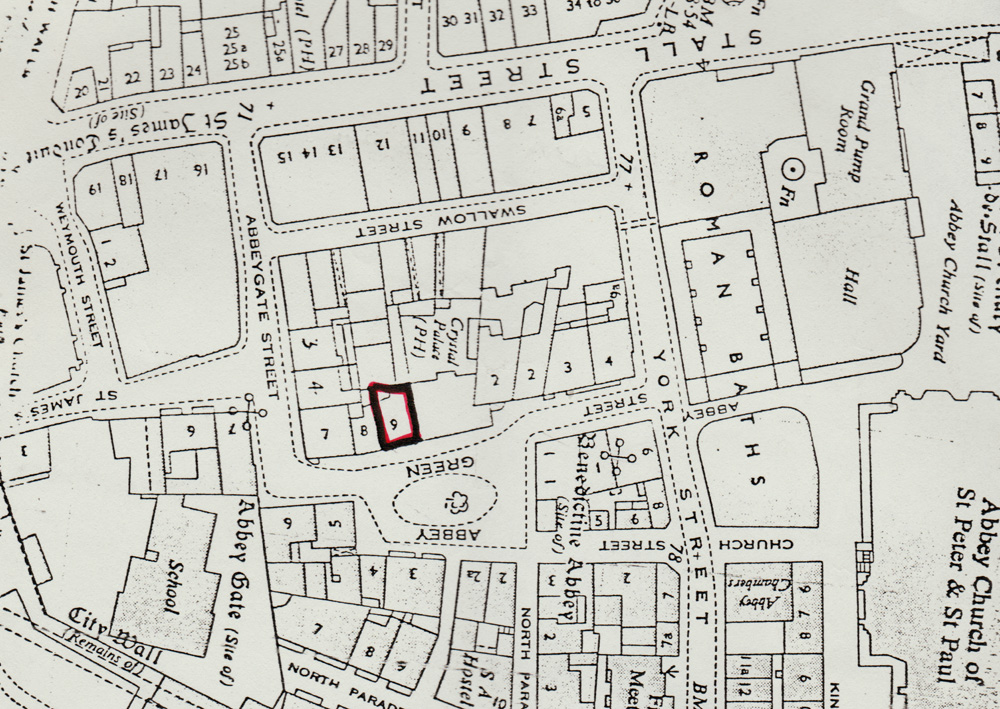
The fine Georgian building we see today replaced an earlier one whose description and history is revealed in a lease dated 1742, which can now be seen in the Manvers Collection at Nottingham University. For all the properties we now see in Abbey Green were originally owned by this family through descent from John Hall of Bradford on Avon who had purchased the estate from the Colhurst family in 1612. He was to develop it and many houses were built soon after. Some of these survive to this day in their unaltered state such as “Sally Lunns” and “2-3 Abbey Green”. No doubt one of these gabled properties originally stood on the site of Minion House. The early Lease tells us that “John Hall of Bradford on Avon in the county of Wilts, Esq. since deceased gave unto John Wiltshire of the city of Bath in the said County of Somerset, Carpenter since also deceased of the messuage or tenement here in after mentioned for the term of four score & 19 years Determinable on the several decrees of the said John Wiltshire, John Wiltshire his Son ( both since deceased ) & William Wiltshire his brother”.It shows us that a 99 year lease had been given to John Wiltshire and his descendants for a small ground rent on a plot of ground on which he would have had built a house in which he may have lived or rented out. The Wiltshire family were very wealthy and influential in the city. Again, returning to the document we learn that it had been renewed in 1684 by William Player and again in 1734. It was in this year that the Duke of Kingston, who had inherited the Estate: “made & granted by the said Duke of Kingston to John Chapman Scott & Robert Robins of the same messuage for the term of four score and 19 years to commence from and immediately after the end expiration or other sooner determined of the said term of four scare and 19 years”. It would seem John Chapman Scott had taken out a new 99-year lease on the property and was paying £5 a year ground rent to the Duke. From studying the City Records we find that he was a Cordwainer (Shoemaker) who had married Elizabeth Chapman. a Widow in 1716. They were to be blessed with a daughter, Sarah who was baptised in St. James Church in 1722. Records for Bath abbey show that John Chapman Scott was buried there in 1734. His widow, Elizabeth was to renew her lease with the Duke soon after and again the Lease informs us: This Indre made the 25th day of December 1742 Between the noble Evelyn, Duke of Kingston upon Hull of the one part & Elizabeth Scott of the Parish of Widcombe in the County of Somerset, Widow of the other part Witnesseth that for in consideration of a good and perfect surrender already had and made by the said Elizabeth Scott. If Sarah Scott, the daughter of the said Robert Chapman Scott should so long live and in consideration also of the sum of £35 of good and lawful money of Great Britain to the said Duke of Kingston”. The Lease had now been changed after she paid the Duke £35 for it to include her daughter, Sarah and continued paying him £5 a year ground rent. It also shows us that Elizabeth was then living in Widcombe, on the edge of Bath and was no doubt leasing 9 Abbey Green. When she died in 1758, she was buried with her husband in Bath Abbey. This was also to be the year in which her daughter, Sarah Scott was to marry John Brabant of Bradford on Avon, who was shown as a widower on the license for the ceremony held in St. James Church in Bath.
The 1742 Lease shines a light on the state of the property in that year as follows: All that ruinous messuage or tenement formerly a moiety of a ruinous messuage or tenement formerly in the possession of William Player and now of the said Elizabeth Scott her under tenants or assigns and is bounded on the north west side by a piece of ground formerly belonging to Richard Westmacott and now of Francis Cornish and adjoins a messuage formerly in the possession of one Robert Webb and now of William Hull Esq. and John Harrington Esq. Under Tenants or assigns on the North East side and adjoins a messuage in the possession of Mary Crouch, Widow her undertenants or assigns being the other moiety of the said Messuage on the South West side the Abbey Green on the South East part therefore situated and being in the City of Bath, forever paying to the Duke of Kingston the yearly rent of £5. The fine Georgian building we see today was as a result of the next gentleman who comes on to the scene. For it is John Brabant, the husband of Sarah Scott, who though often described as a Carpenter, was in fact a Builder, who amongst the many properties he was involved with, included nos. 21 and 22 The Circus for John Wood in 1765. Amongst the other lease holders was Thomas Jelly, who is attributed as the Architect for 9 Abbey Green (Minion House) in its Listing by English Heritage. This may well be the case as both gentleman must have worked together on other projects including nearby Abbey Street.
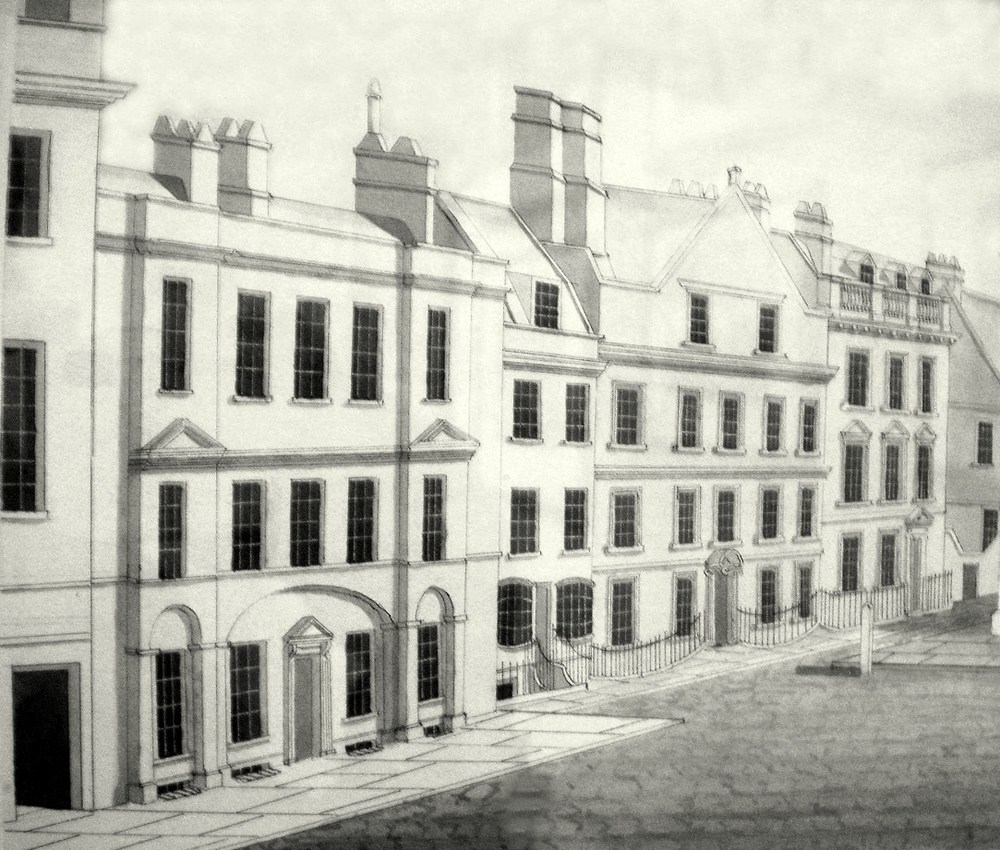
| Roman | The site of a Roman Villa, a section of its decorative Mosaic floor was found in the cellar of the neighbouring Crystal Palace public house in 1984. There is also a Roman well under a bedroom in the adjoining Elton House.Apparently the Roman pavement which has been found beneath the Pub continues on under this house as well. |
| 1174 | the plot of ground is in the area of the Bishops Palace with its boundary wall on to Abbey Green.The site of the Crystal Palace is filled with the saxon St. James church with its cemetery to the north. In 1279 a replacement Church is built by the South gate and the former church`s Nave becomes the Bishop`s own chapel.Medieval deeds refer to the land east of Stall Street as the Bishop`s Court. |
| 1543 | Edward Colhurst buys the Priory site in 1543 and gives the Abbey and the monks Churchyard to the City in 1572 |
| 1600 | Savil`s and Speed`s map which are c.1600 depicts a building in the area of Mignon House which adjoins the Gateway into the Priory. |
| 1612 | The Colhurst family sell the property to John Hall of Bradford on Avon who then held the mortgage |
| 1616 | The adjoining site(now the Crystal Palace) was let to Thomas Cotterell, joiner, for development, and described as garden ground in the occupation of Robert Evans.By 1632 it was let to William Chapman, Mercer |
| 1631 | Thomas Hall is the Landlord |
| 1663 | John Hall II is the Landlord |
| 1698 | Abbey Green is reduced in size when 3 substantial properties are built against the eastern wall ( Mrs East`s House, Abbey Green on Gilmour`s Map) |
| c.1700 | The Three Tuns secures rights of way to Abbey Green through Mignion House which can be seen on the 1785 drawing |
| 1711 | Rachel Bayntun inherits Estate, and she later becomes the Countess of Kingston, her husband died 1713 |
| 1722 | Her son Evelyn succeeded to the Bath Estate and in 1726 becomes the Duke of Kingston on the death of his grandfather. |
| pre 1719 | Widow Player leasing property from Duke of Kingston |
| 1719 | John Wiltshire renewed the lease for a "ruinous Messuage" formerly in the tenure of the Widow Player |
| 1734 | Elizabeth Scott, Widow leases property from Duke of Kingston |
| 1742 | Duke of Kingston to Elizabeth Scott rent £5 a year. There is a perpetual rent of £5 for ever more on the property. Most of the properties bordering Abbey Green seem to have been purchased between 1742 -5 from the Duke. |
| Elizabeth Scotts Will | |
| 1773 | The Duke of Kingston dies at Bath in this year |
| 1774 | Mr Brabant - first mention in Rents, previously Scotts |
| 1799 | Mr. Brabant |
| 1800 | Samuel Davis - Hairdresser |
| 1812 | Johnson - Carpenter |
| 1815 | Thomas Coubold |
| 1819 | Parker - Ivory and hard wood turner |
| 1825 | George Bonham (his goods were seized and sold for rent), no.10 Richard Crutwell, the printer of the Bath Chronicle on the site of the Crystal Palace |
| 1833 | Henry Skeate, a currier ( a craftsman that curries leather for use) |
| 1833 | Edward Cole |
| 1845 | Charles Morgan, working jeweller |
| 1858 | Mrs. E. Blackmore - Nurse, John Waite - Working Jeweller, Mrs. Waite - Artist in Hair |
| 1864 | Thomas Curtis - Tailor, George Bryne - Carpenter. |
| 1876 | Thomas Curtis - Tailor, Edmund Ashby - Painter. |
| 1884 | Ann Honora Harriette Bonham, Robert Bridges Bellars,and Sophia, his wife,Roland Louis Agassiz and Mary Louisa, his wife, John Frederick Harman Brown, Frederick Lennox Harman Brown sell to Ernest Wallace Rooke |
| 1885 | Ernest Wallace Rooke(of 37 Gay Street, Bath) sells to William Andrew Curtis (Tailor) for £230, |
| 1904 | Charles Chapman of Teddington mortgage to William Andrew Curtis (Tailor) |
| 1921 | Charles Chapman reconveyance of mortgage to William Andrew Curtis |
| 1934 | Probate of Will of William Andrew Curtis(Grocer and General Trader) leaves business to daughter-Violet |
| 1937 | William`s wife Annie Jane Curtis dies in 1937 |
| 1948 | Charles & Vincent St. Clare Curtis(sons of William Andrew) to Miss Beatrice Blanche (Violet) Curtis for £600 |
| 1968 | Probate of Will of Miss Beatrice Blanche (Violet) Curtis |
| 1968 | John Sparrow, Solicitor, Executor to Winston Phineas Moses and Irene Grace Ruth Moses for £4200 |
| 1968 | change of use of the ground floor from residential use to a picture gallery. ( 8522 - approved) |
| 1968 | alterations to shop front . (detailed drawings approved 1.10.68 8522-1) |
| 1979 | Guy Anthony Marsh and Ronald Earnest Marsh buy Mignon House, 9 Abbey Green for £60,000 |
| 1979 | Change of use from a picture gallery and residential accomodation to a jewellers shop (8522-2 - refused) |
| 1979 | Change of use of ground floor to a jeweller`s shop with ancillary workshop in basement r (revised - 8522-3 ) |
| 1988 | Ronald Marsh dies |
| 2004 | R.E.Tricker (holdings) Ltd rent shop |
| 2006 | Paul & Neil Mattingly buy premises |
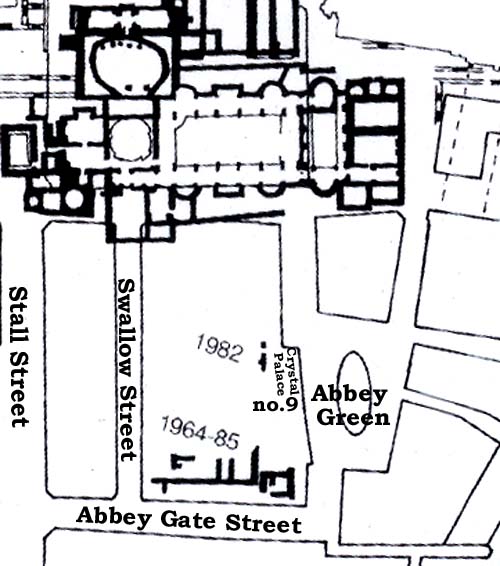
.jpg)
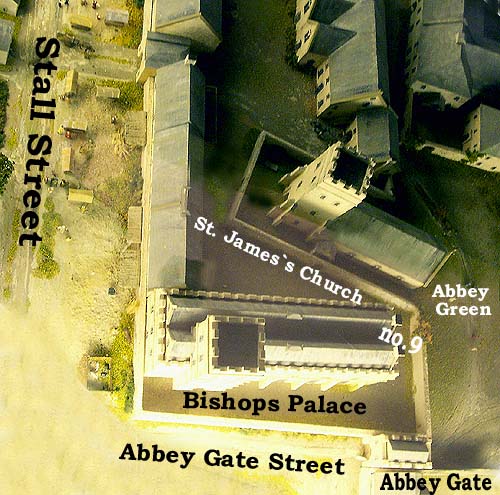
The Abbeygate demolished in 1733 is shown as the main entrance to the precincts, only an iron hinge on a wall by Blacks shop remains of it, although a fragment of the ancient Abbey Wall can still be seen in little Orchard Street, behind Marks & Spencers.
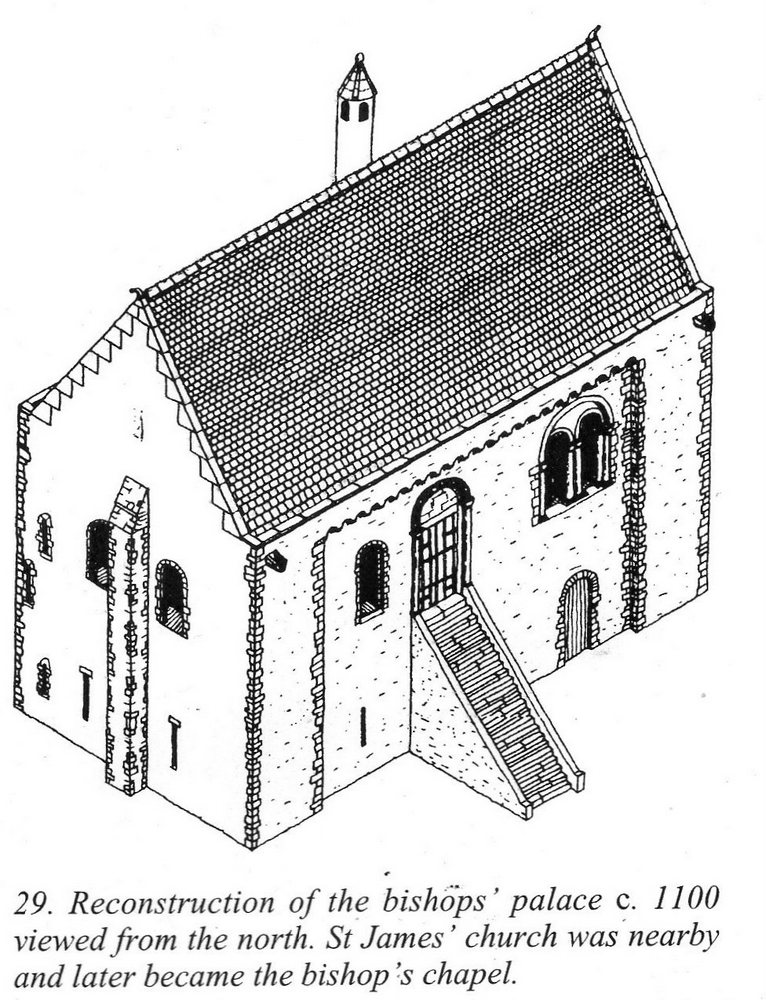
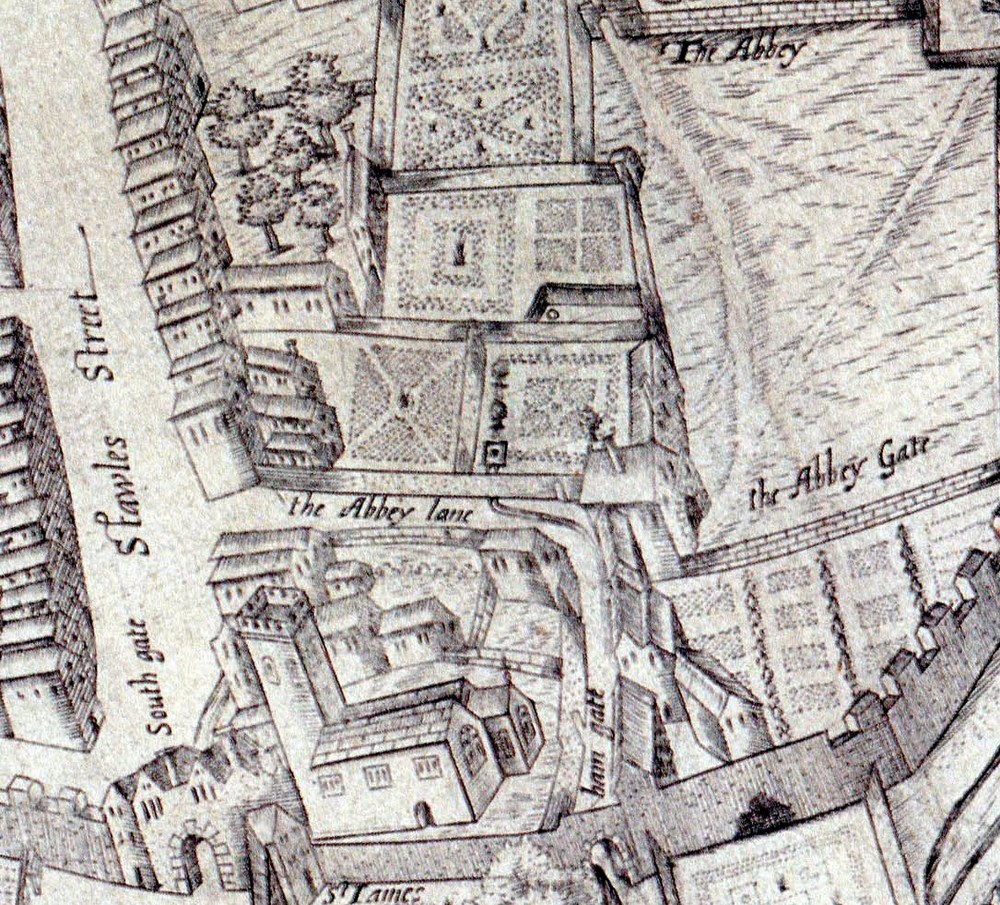
A Bird`s Eye view of Bath c. 1600, engraved from a drawing by physician Henry Savile. This is an amazing map as it shows a bird`s eye view on the area and has only come to light in recent years. The Abbey Gate is clearly seen, and the wall along side it still exists in Little Orchard Street. There was obviously an earlier building on the site of Minion House (no. 9 Abbey Green) and what appears to be a path to a passage under the building which lead to a knotted garden at the rear. the adjoining garden is now the site of the Crystal Palace public house. A water conduit can be seen on the corner of the garden, this feature was obviously taken into account when rebuilkding as it still justs out.Abbey Green was more extensive then as the houses against the eastern wall were not to be built until 1698. Another interesting feature is the ditch running alomg Abbey Lane. This was the outflow for the waters from the King`s Bath which went on down to the river Avon. Visitors came into the court through the great gate of the priory, which survived until 1733. John Wood described a 'middle aperture' and a 'northern postern'. Picture a large gateway vaulted high enough for heavily-laden carts and a smaller one for pedestrians, like the surviving one at Cleeve Abbey. It was served by a lay porter, who had a lodge beside it. He would have peered through a grille to check your identity before he let you in.
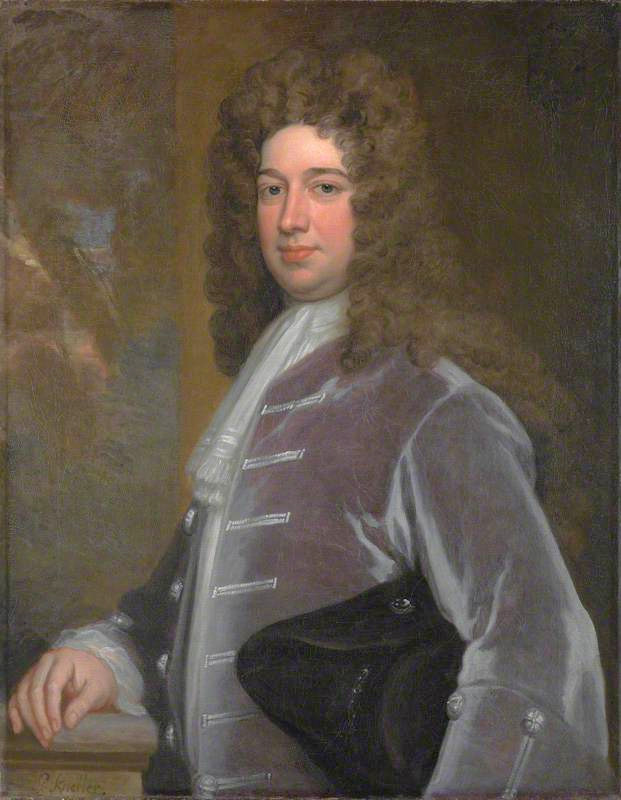
.jpg)
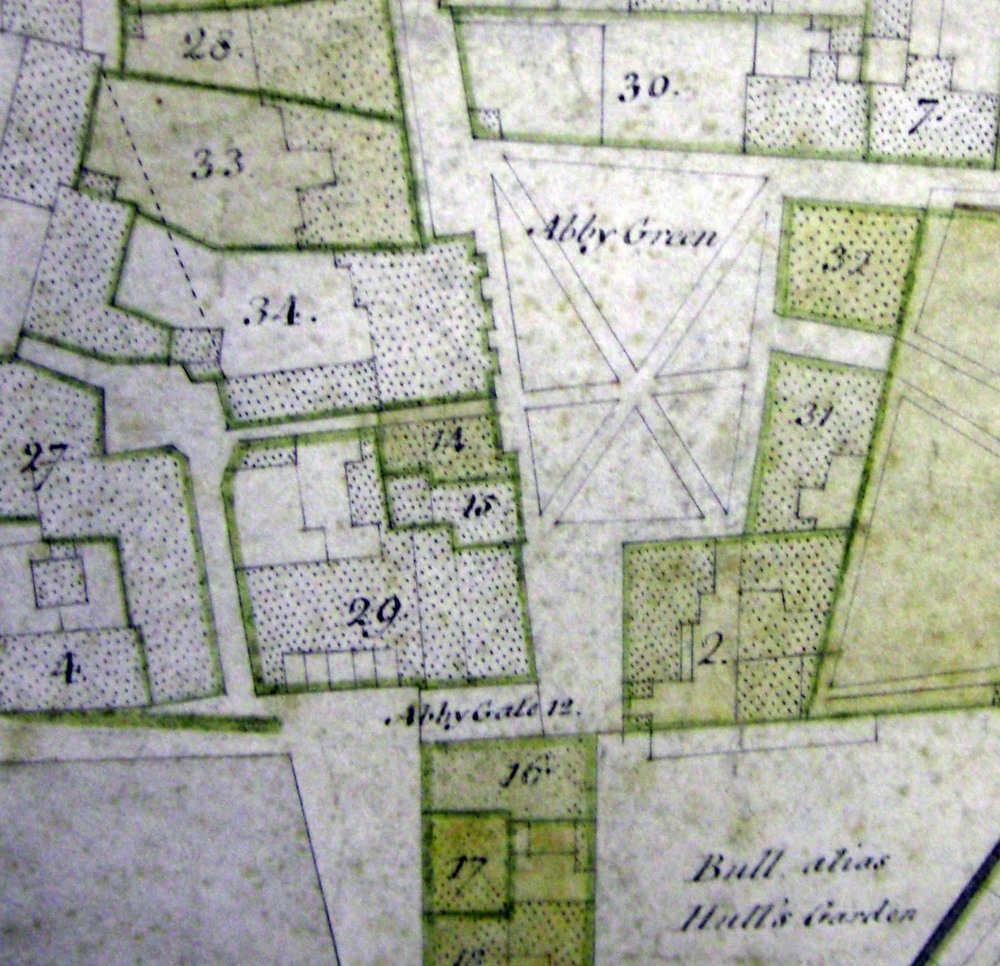
.jpg)
-001.jpg)
.jpg)
.jpg)
Harcourt Masters Map of Abbey Green 1795. This shows that Minion House has lost the passage way through it. It is shown passing through the neighbouring building (now the Crystal Palace).
.jpg)
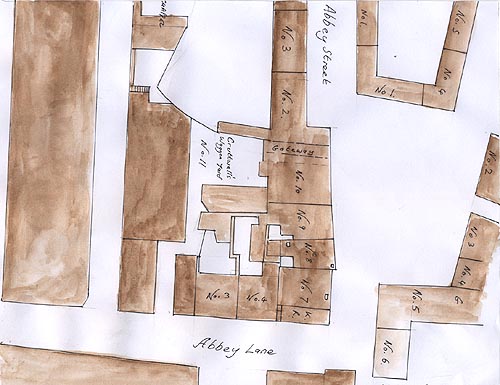
.jpg)
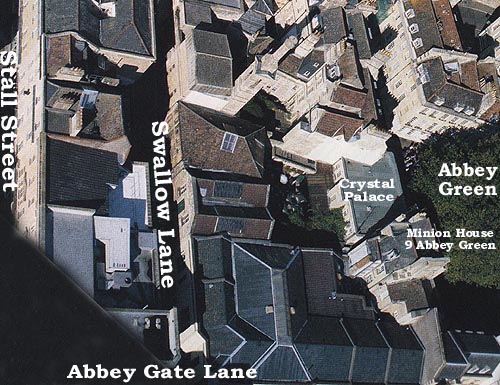
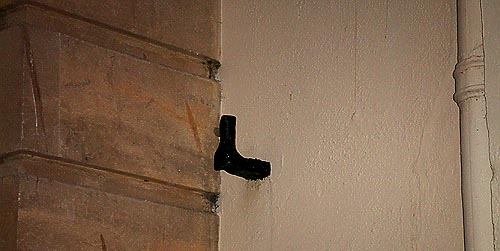
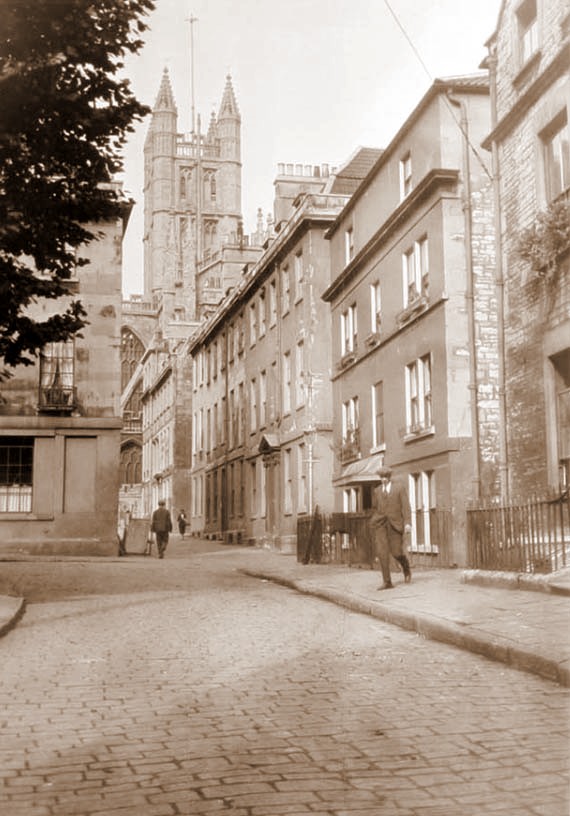
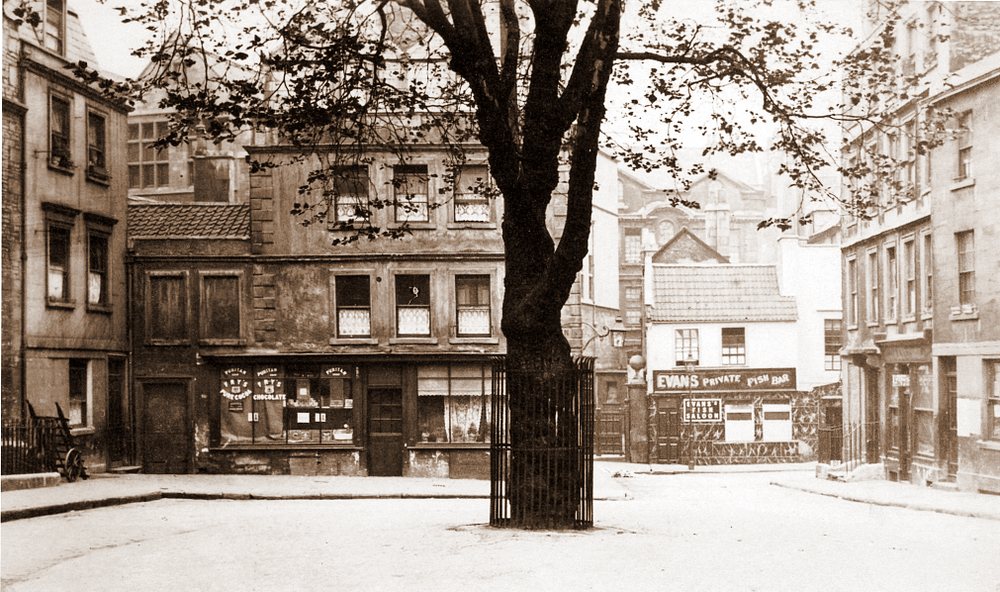
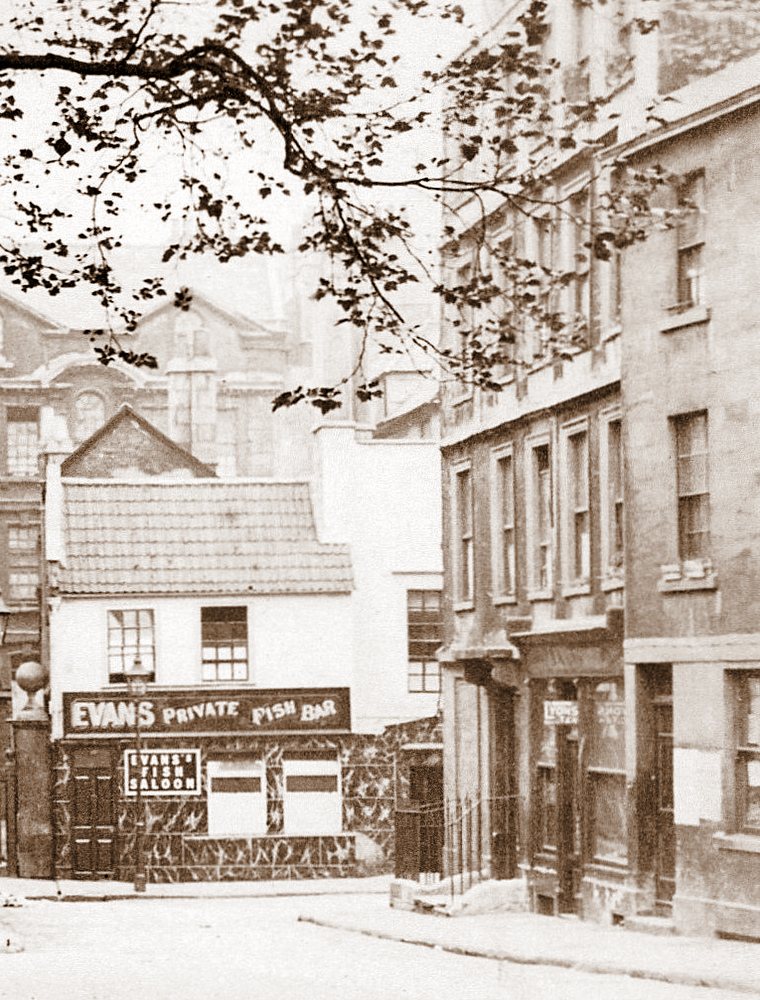
.jpg)
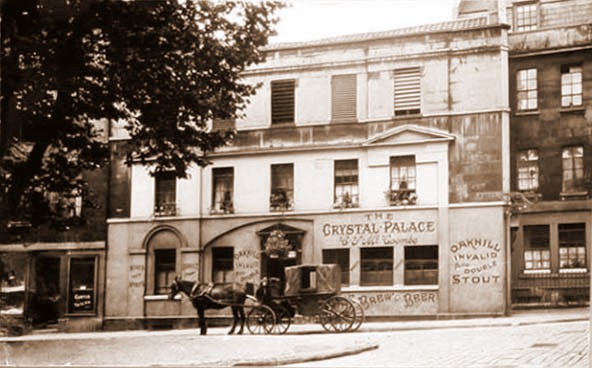
.jpg)
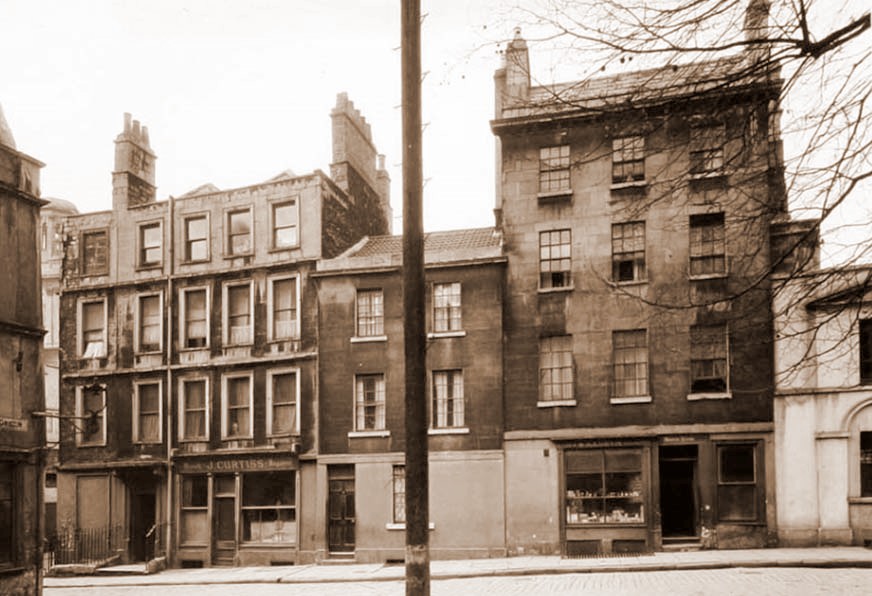
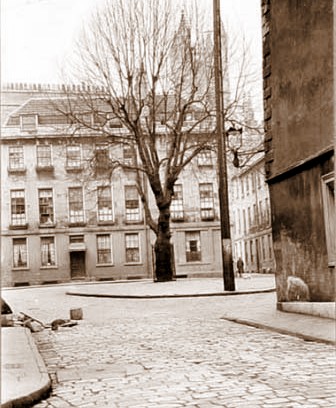
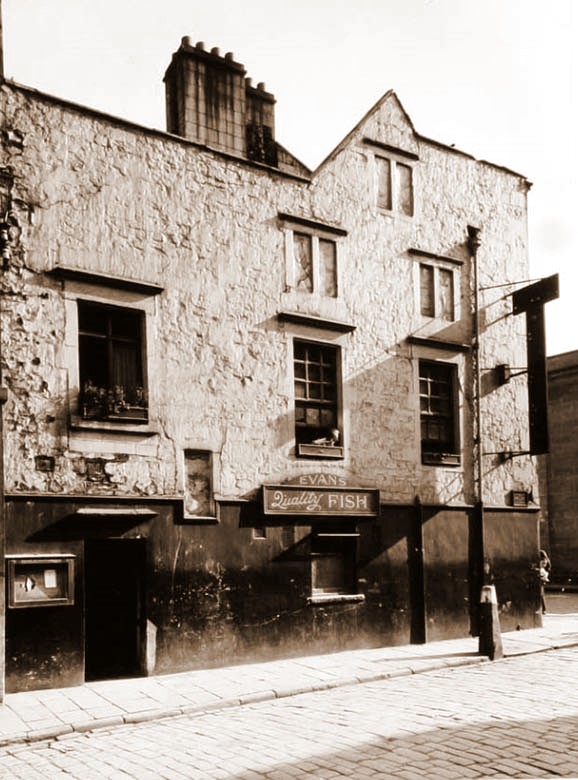
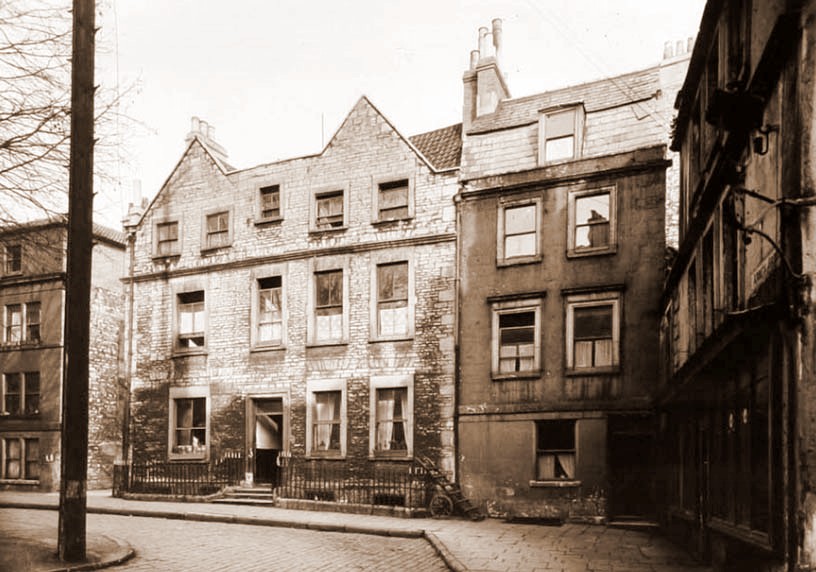
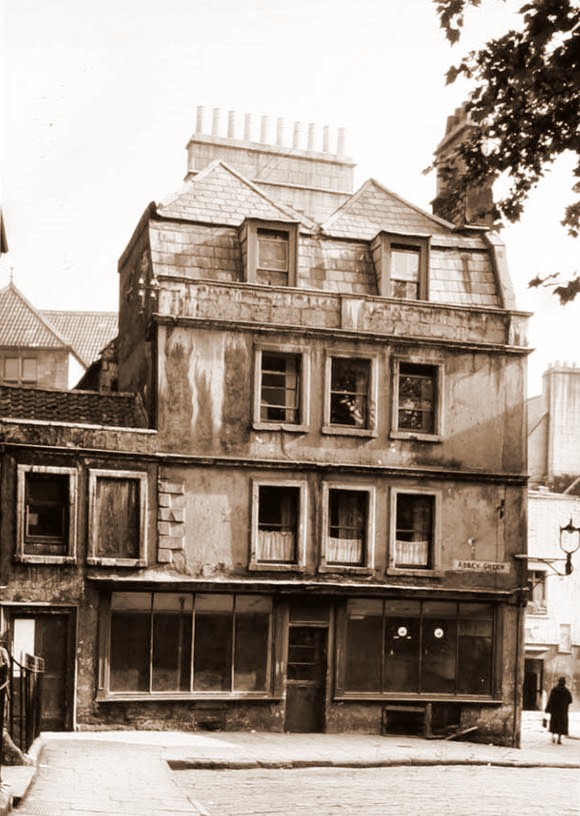
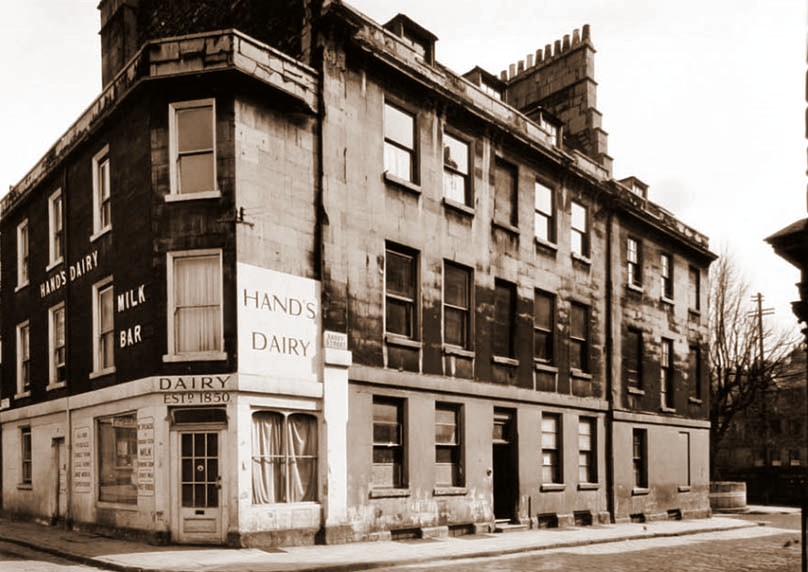
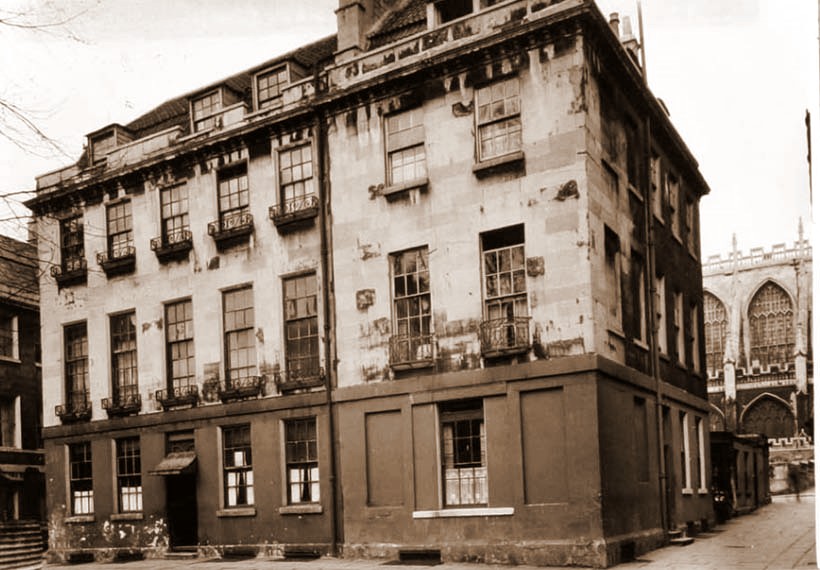
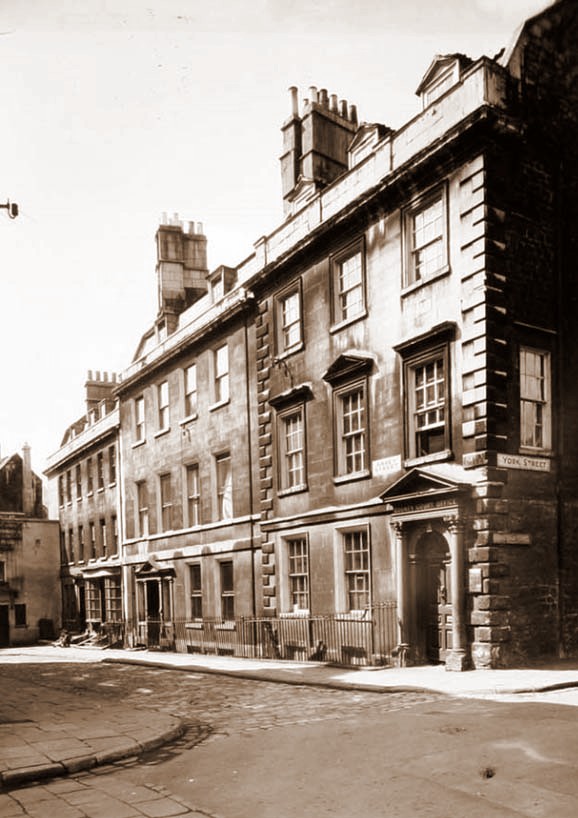
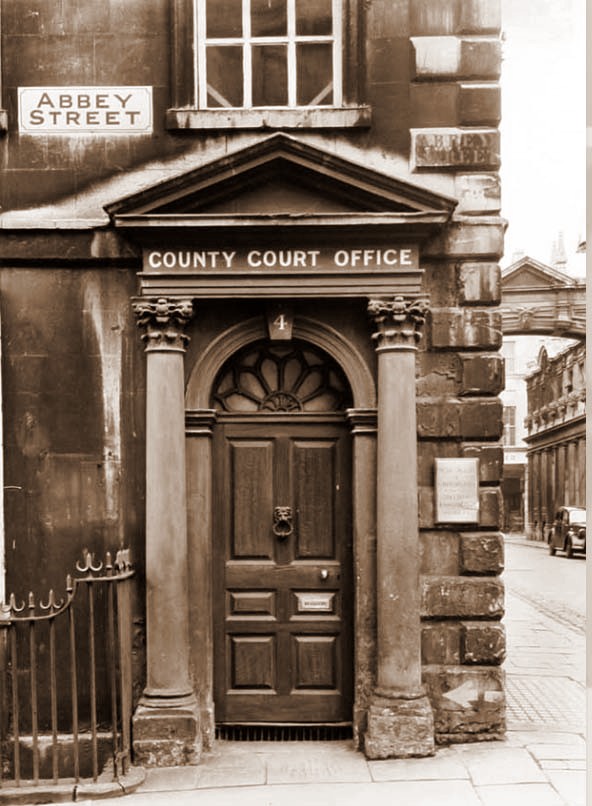
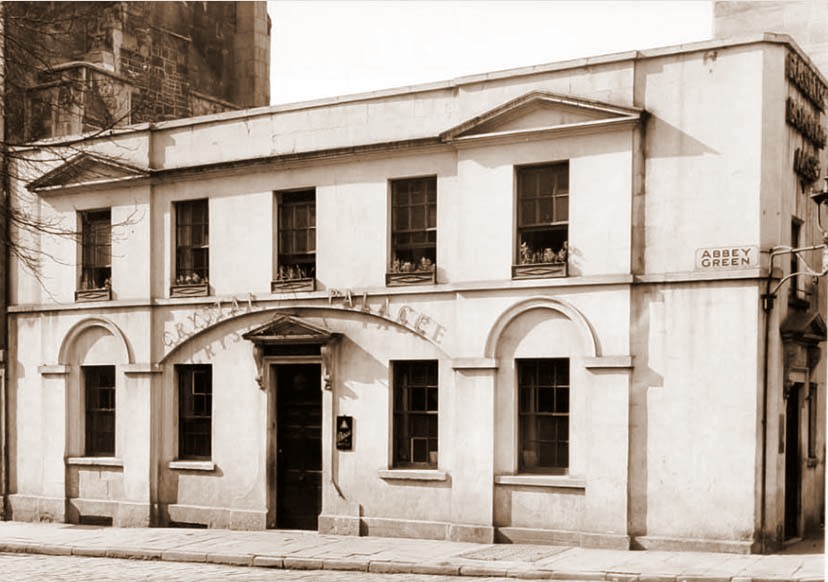
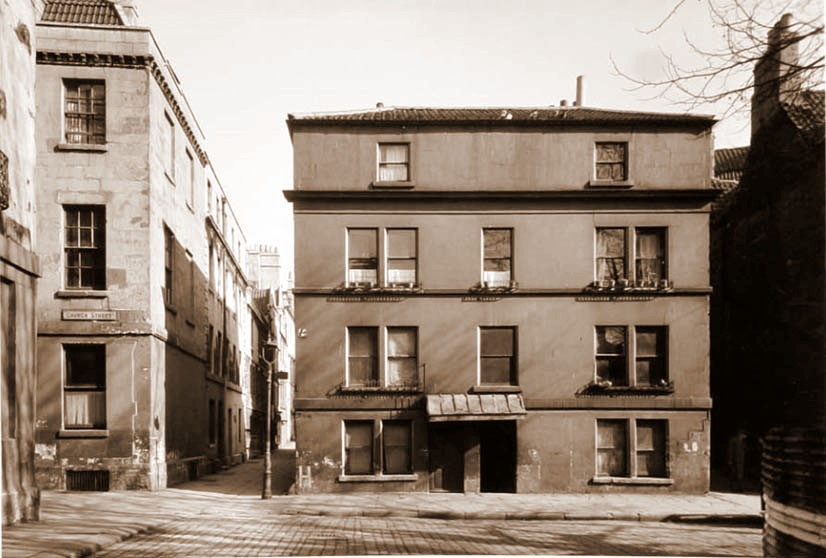
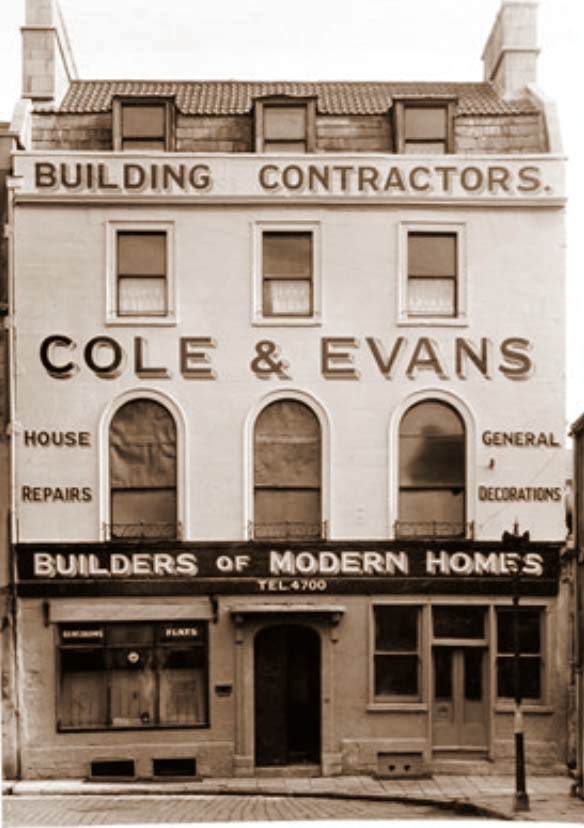

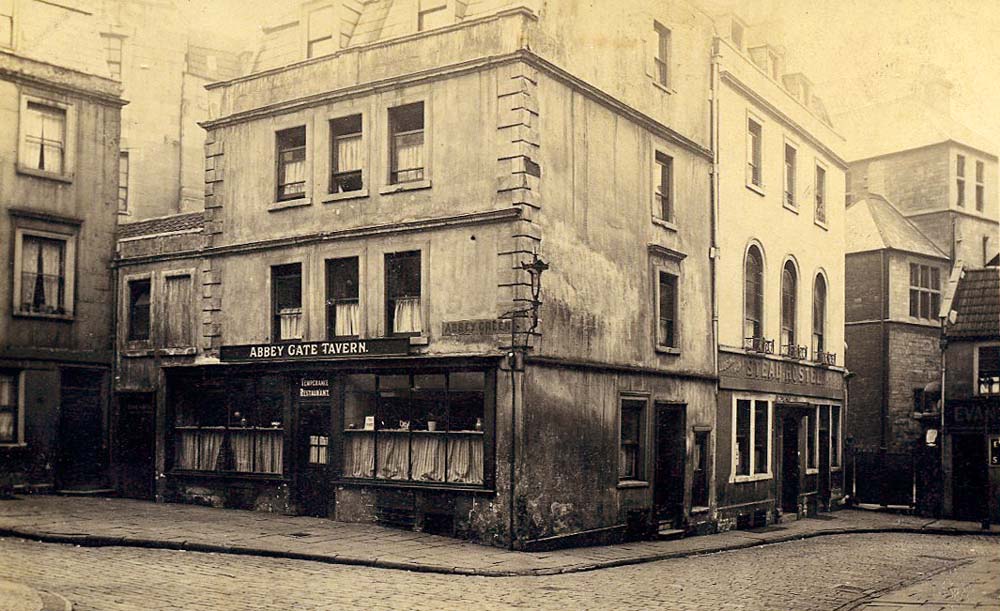
.jpg)
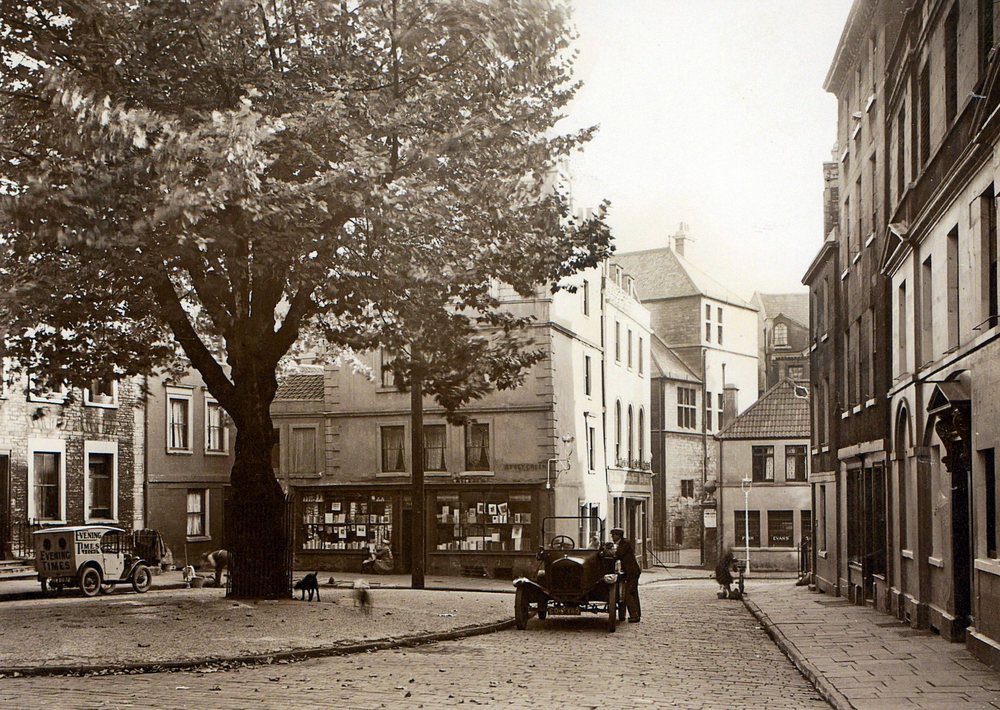
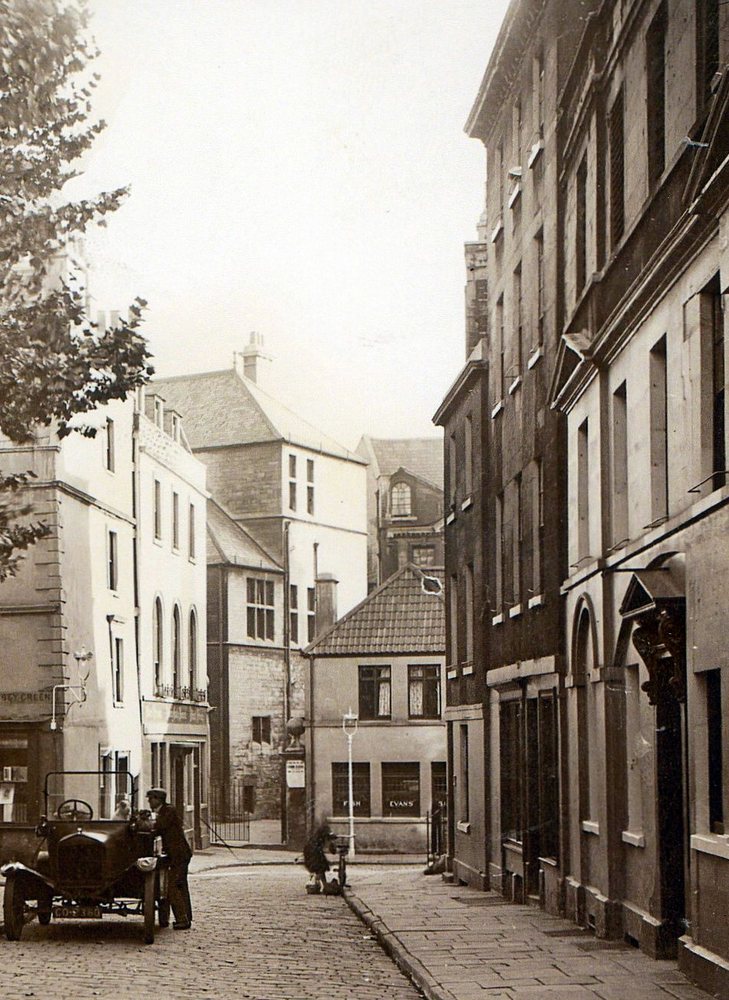
.jpg)
.jpg)
-001.jpg)
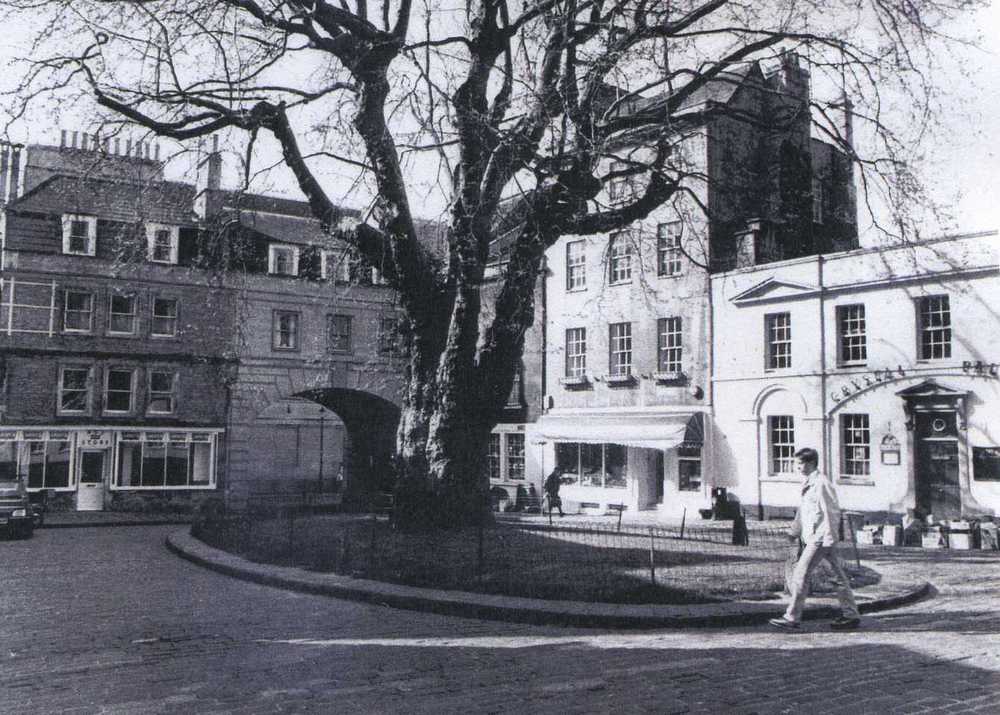
.jpg)
-001.jpg)
.jpg)
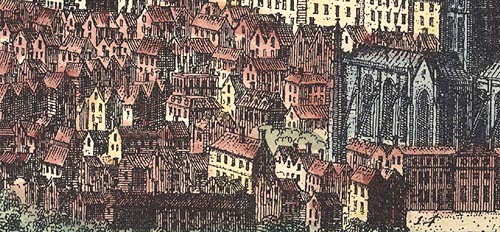
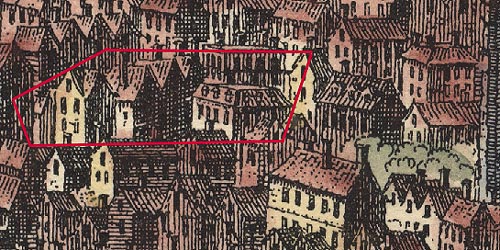

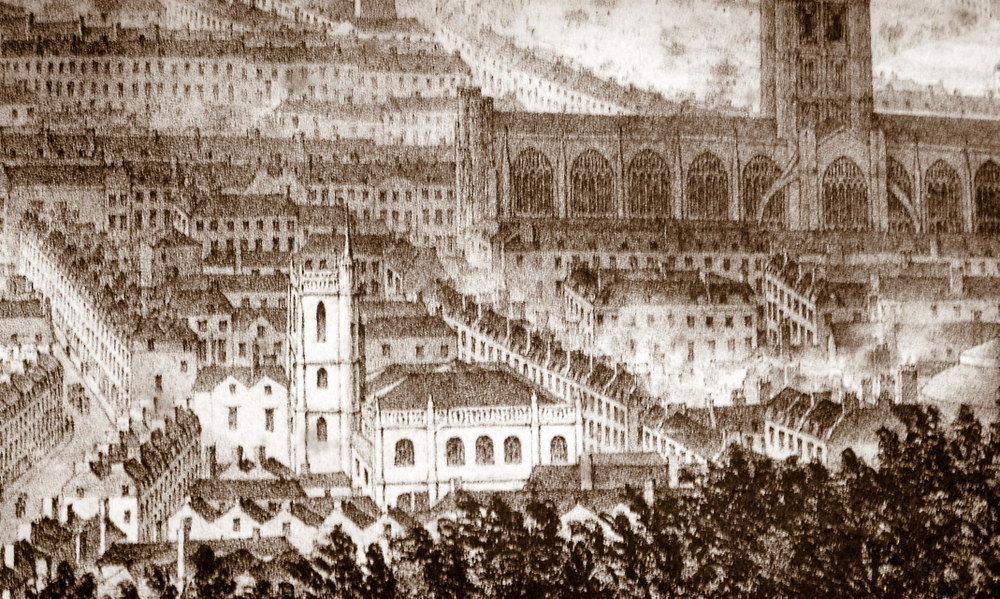
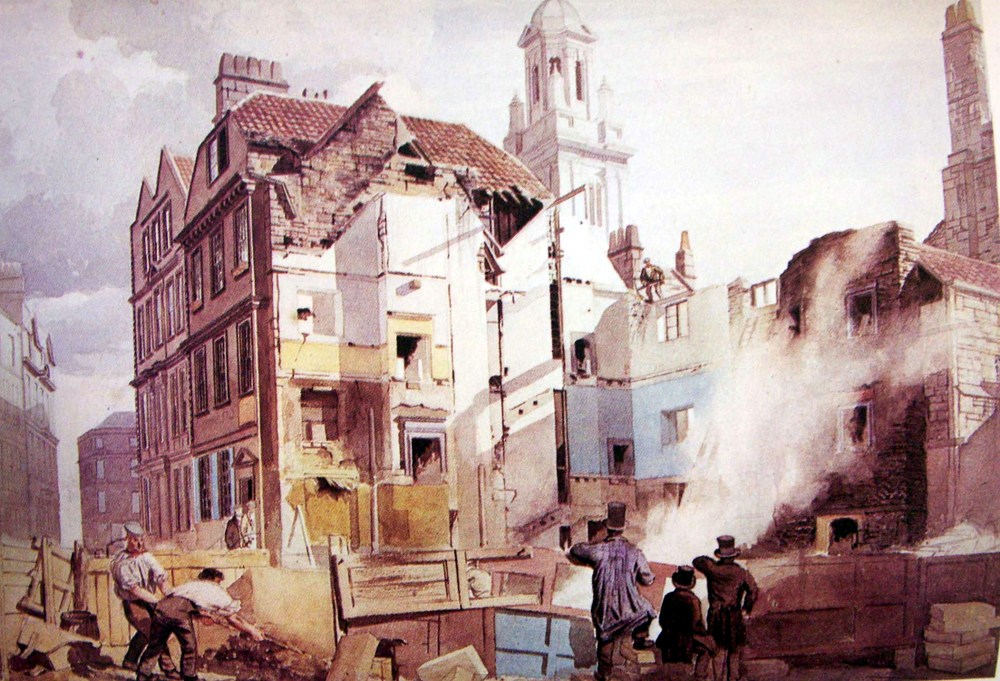
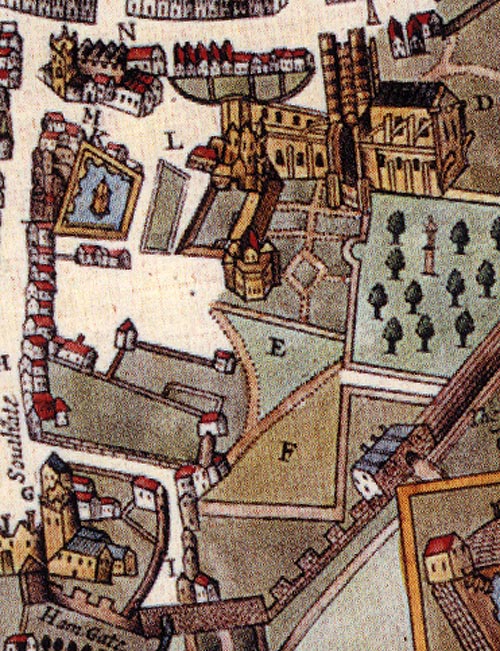
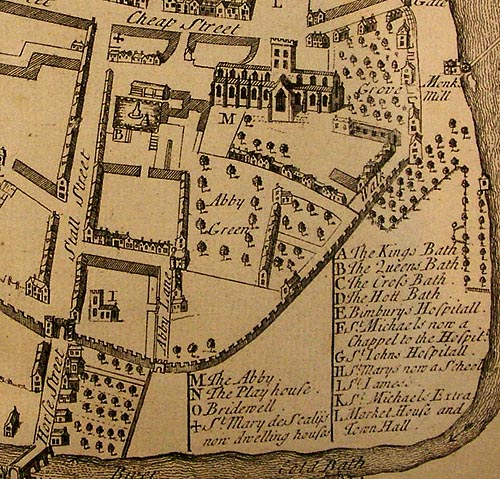
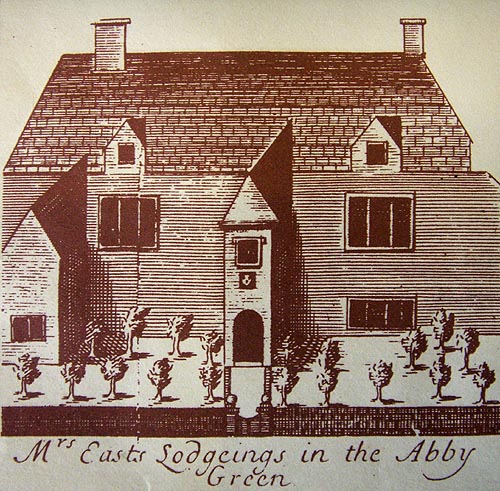
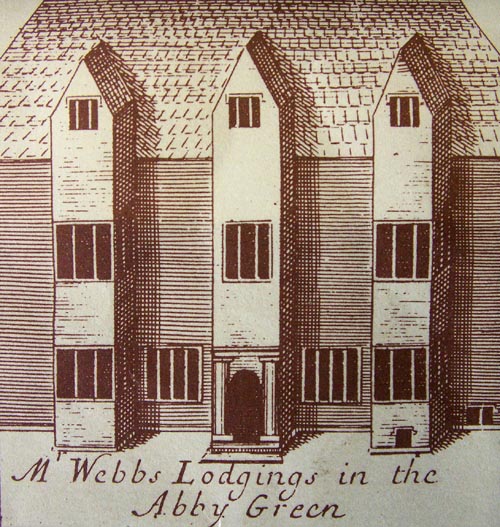
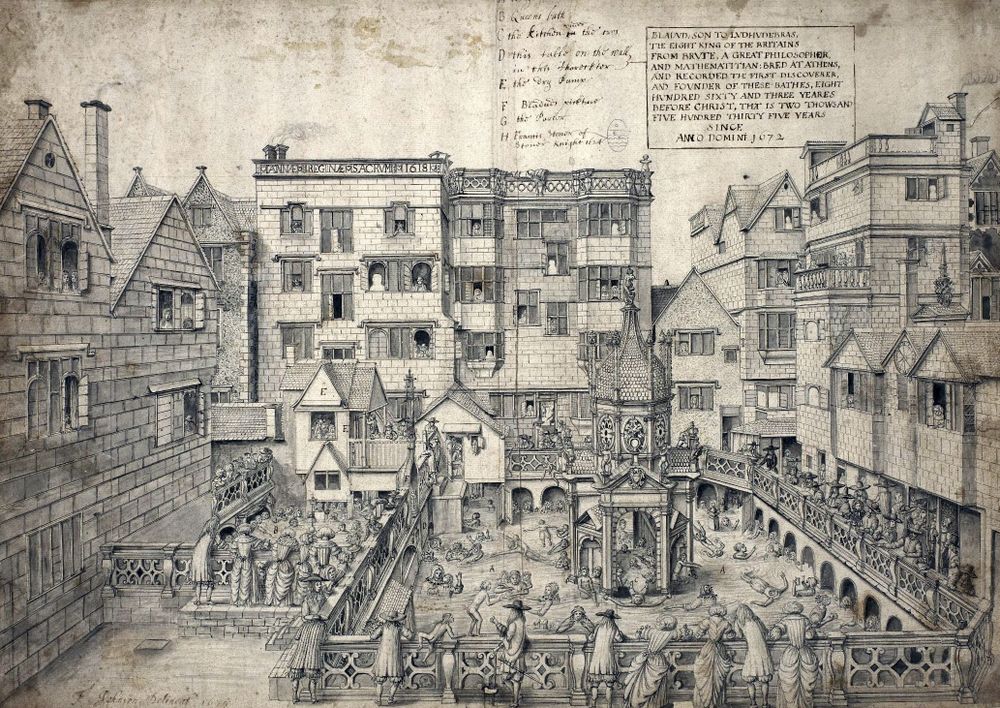
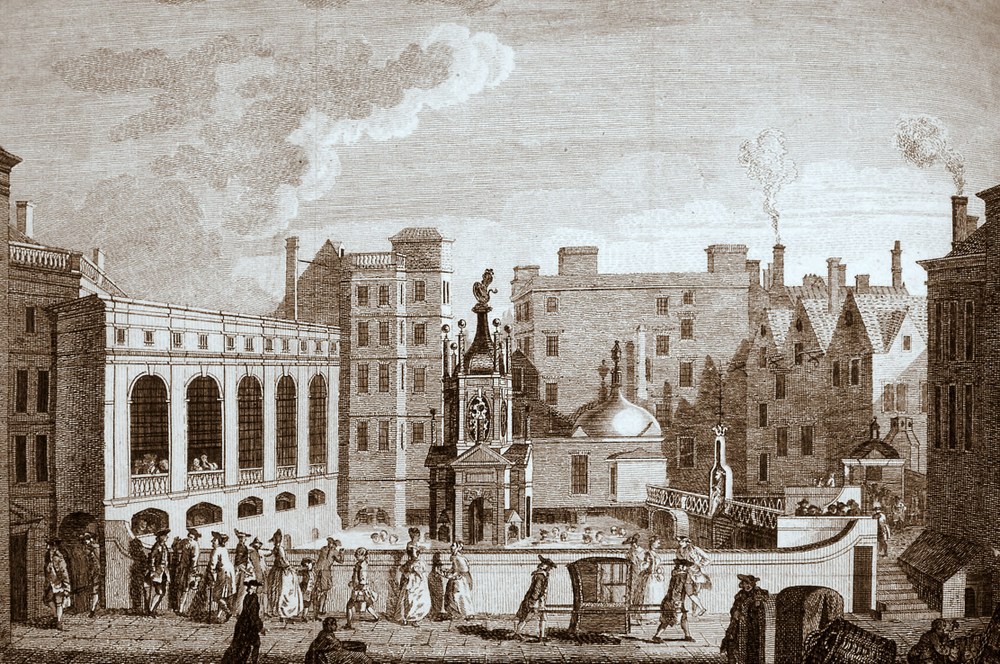
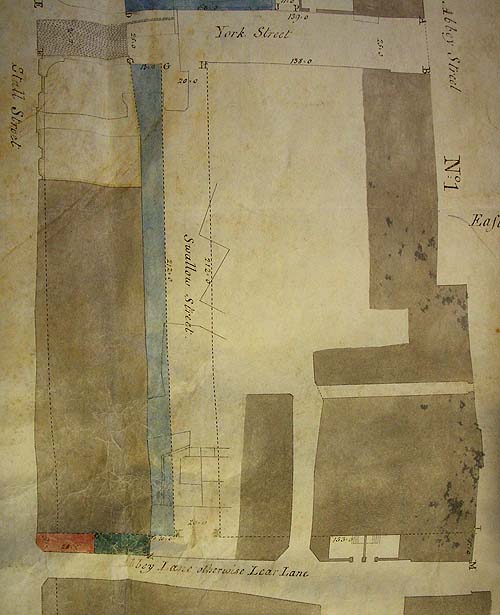

.jpg)
.jpg)
.jpg)
.jpg)
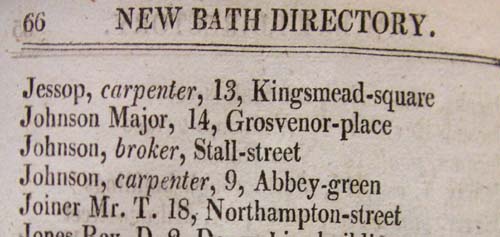
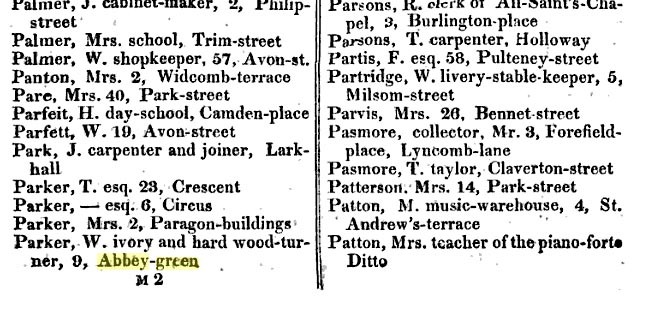
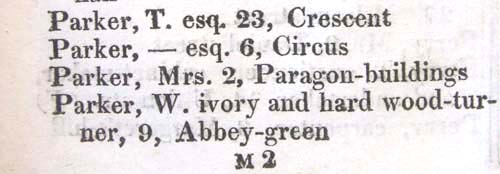
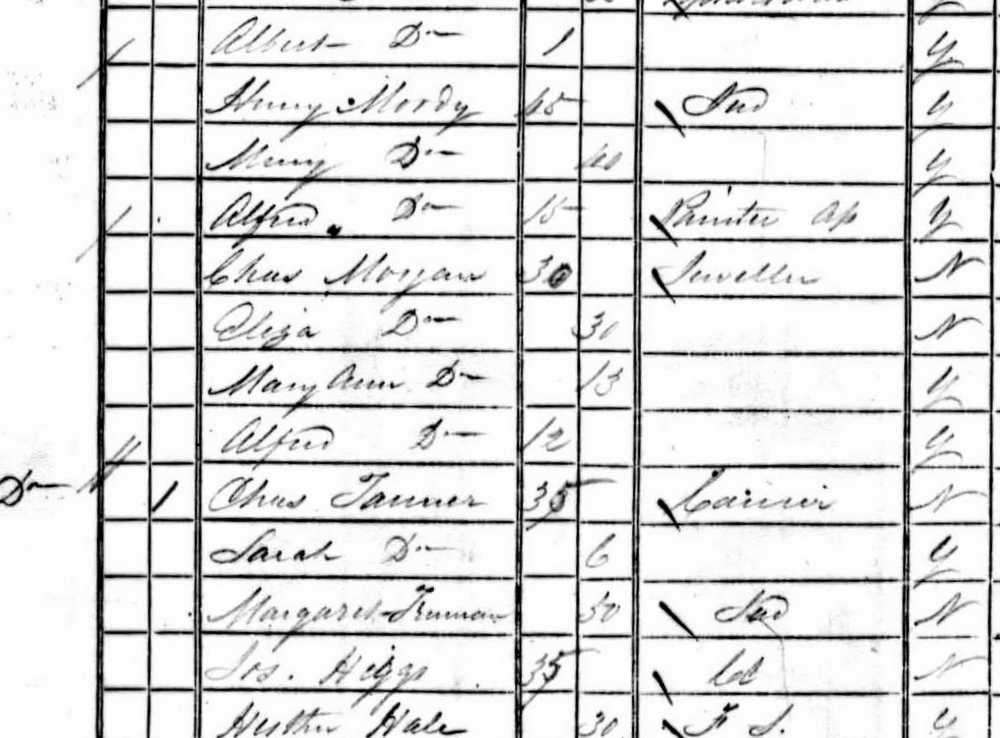
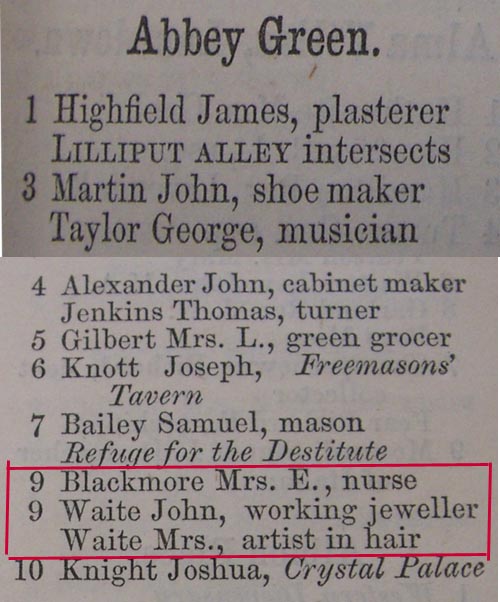

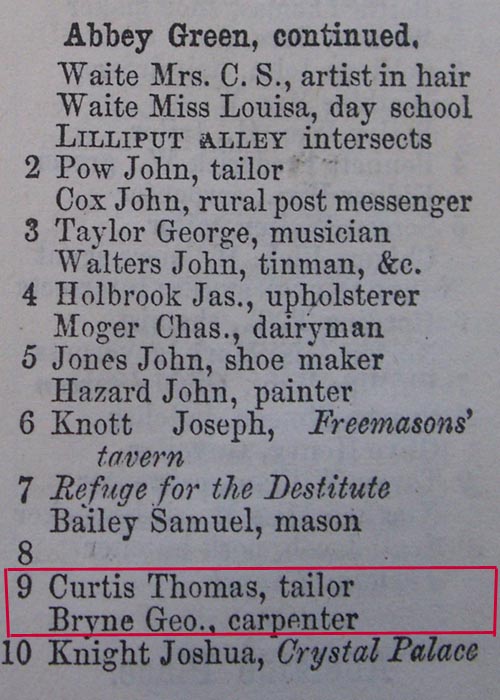
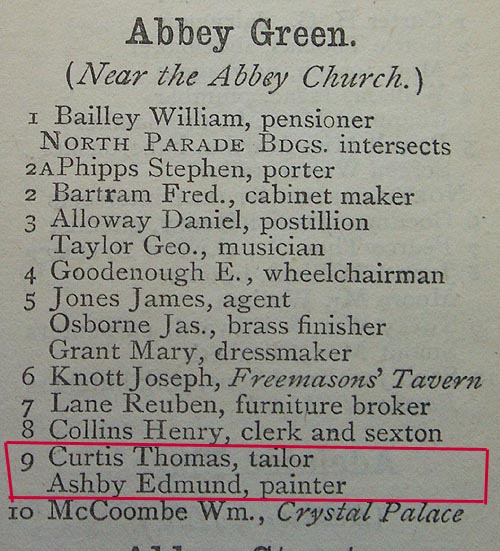
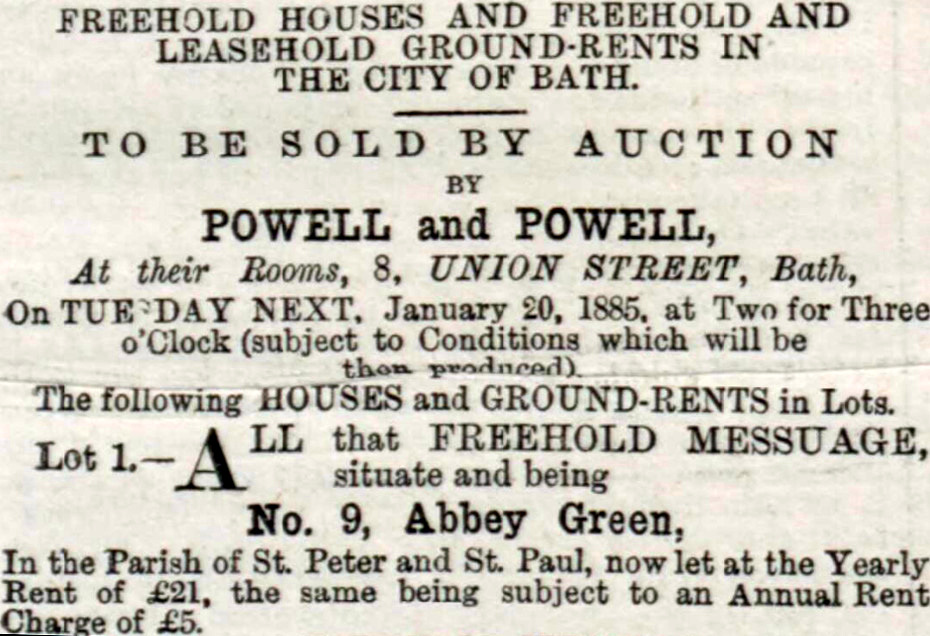
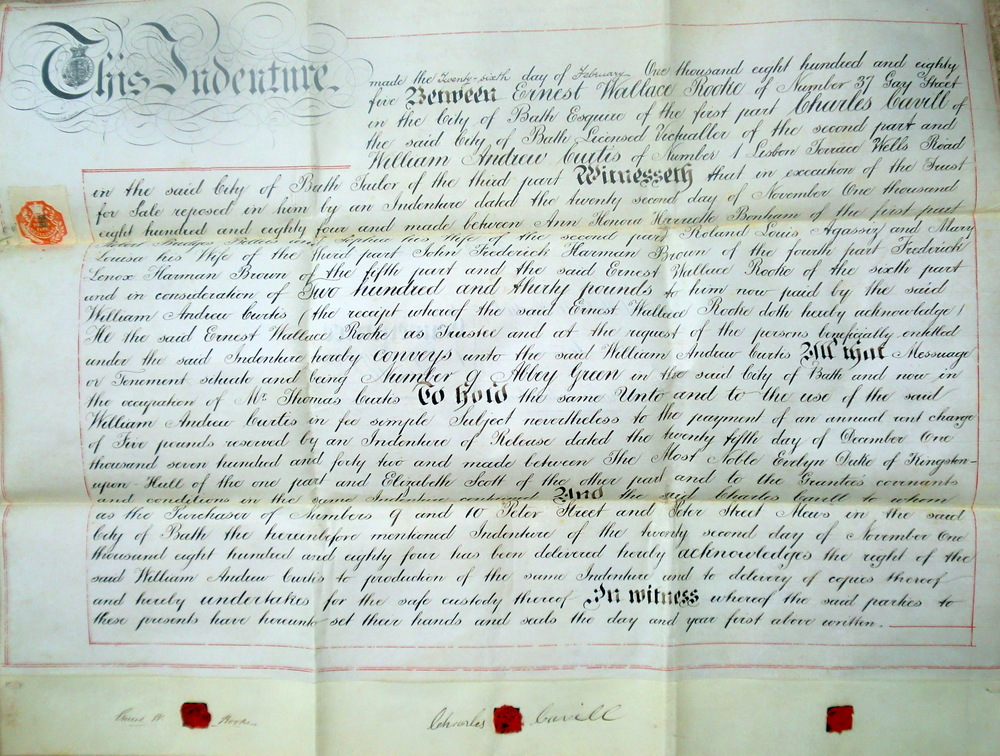
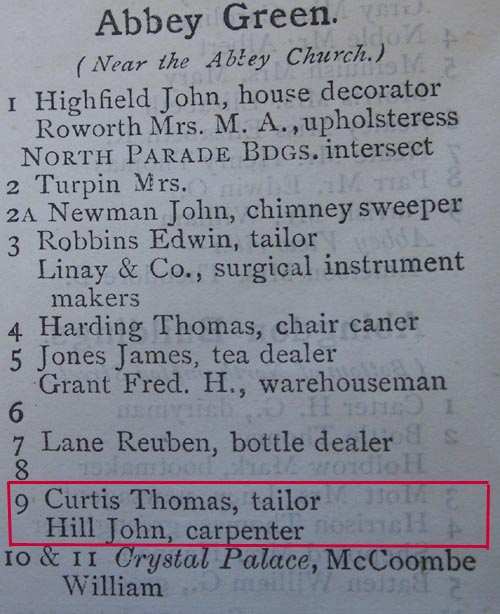
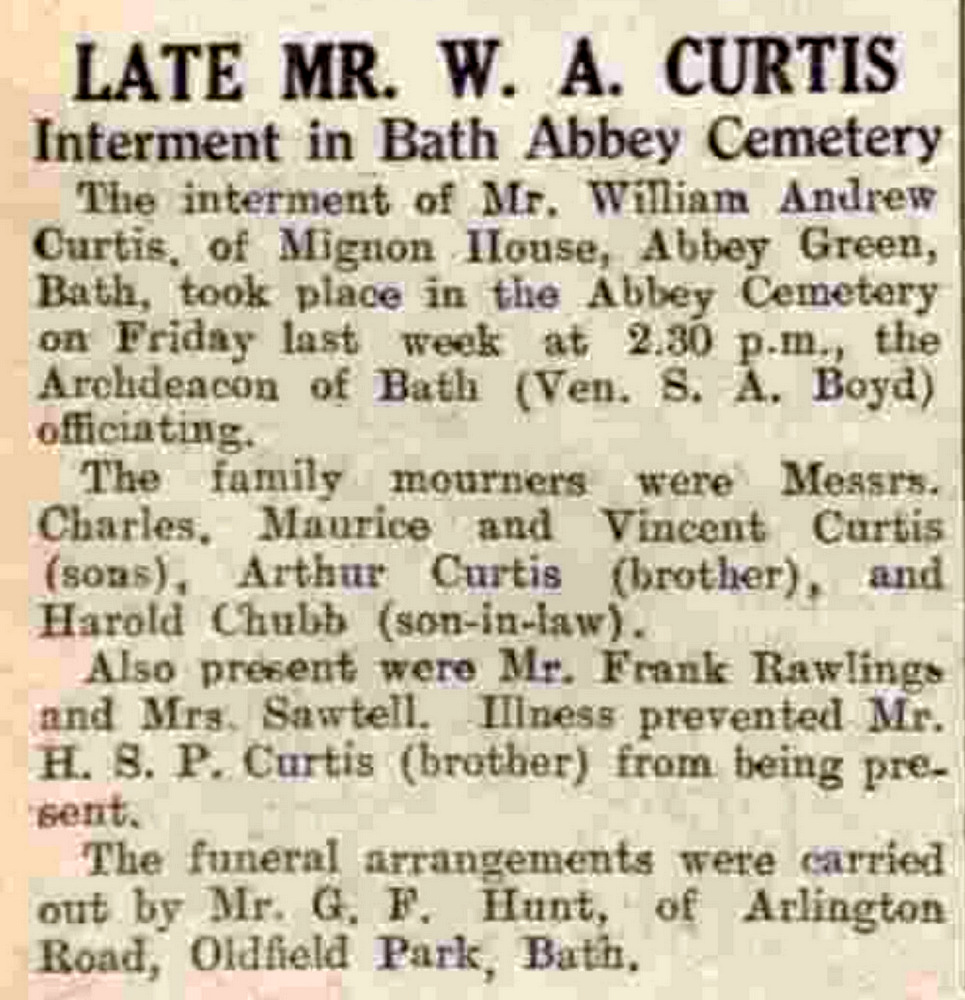
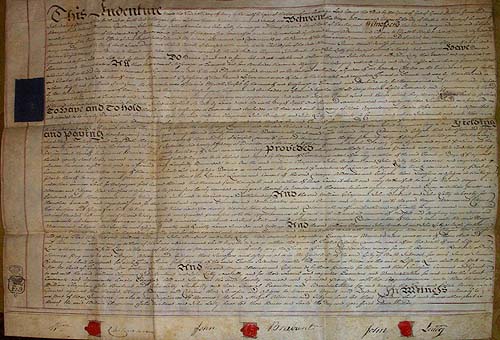
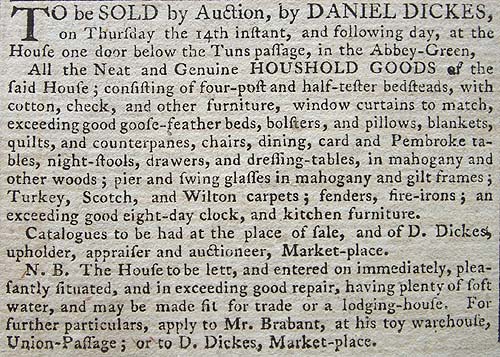
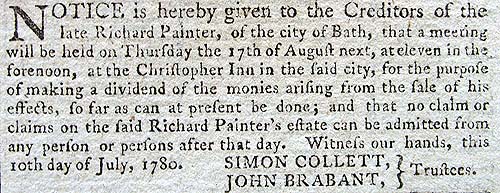
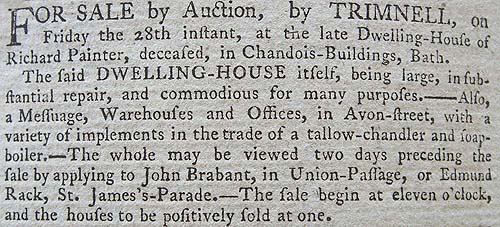
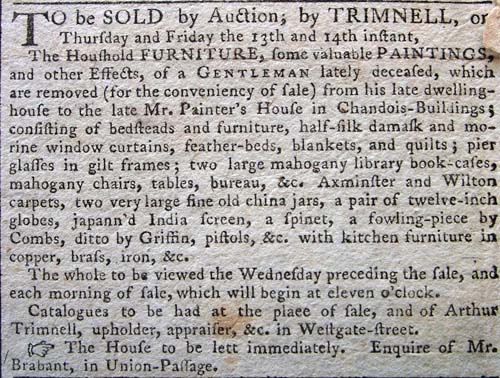
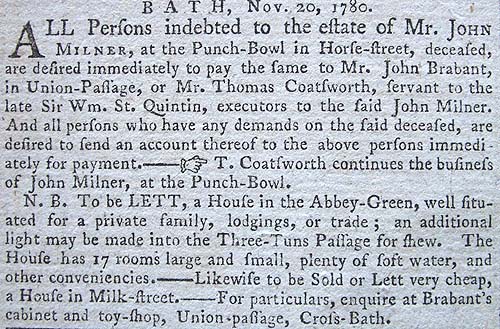


The plan above shows clearly the passage way that went to the right of the entrance to 9 Abbey Green and is now a small window. It lead originally to the rear of the Three Tuns Inn on Stall Street. The building on the right is now the Crystal Palace.

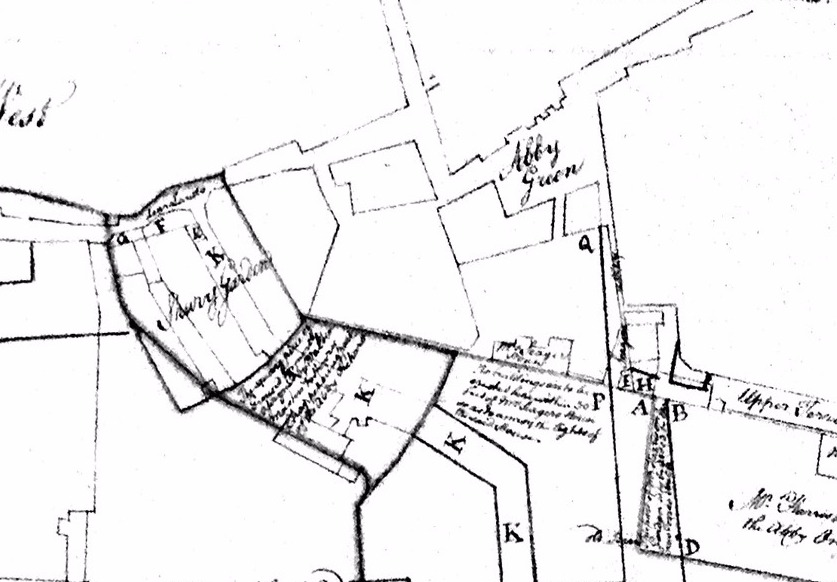
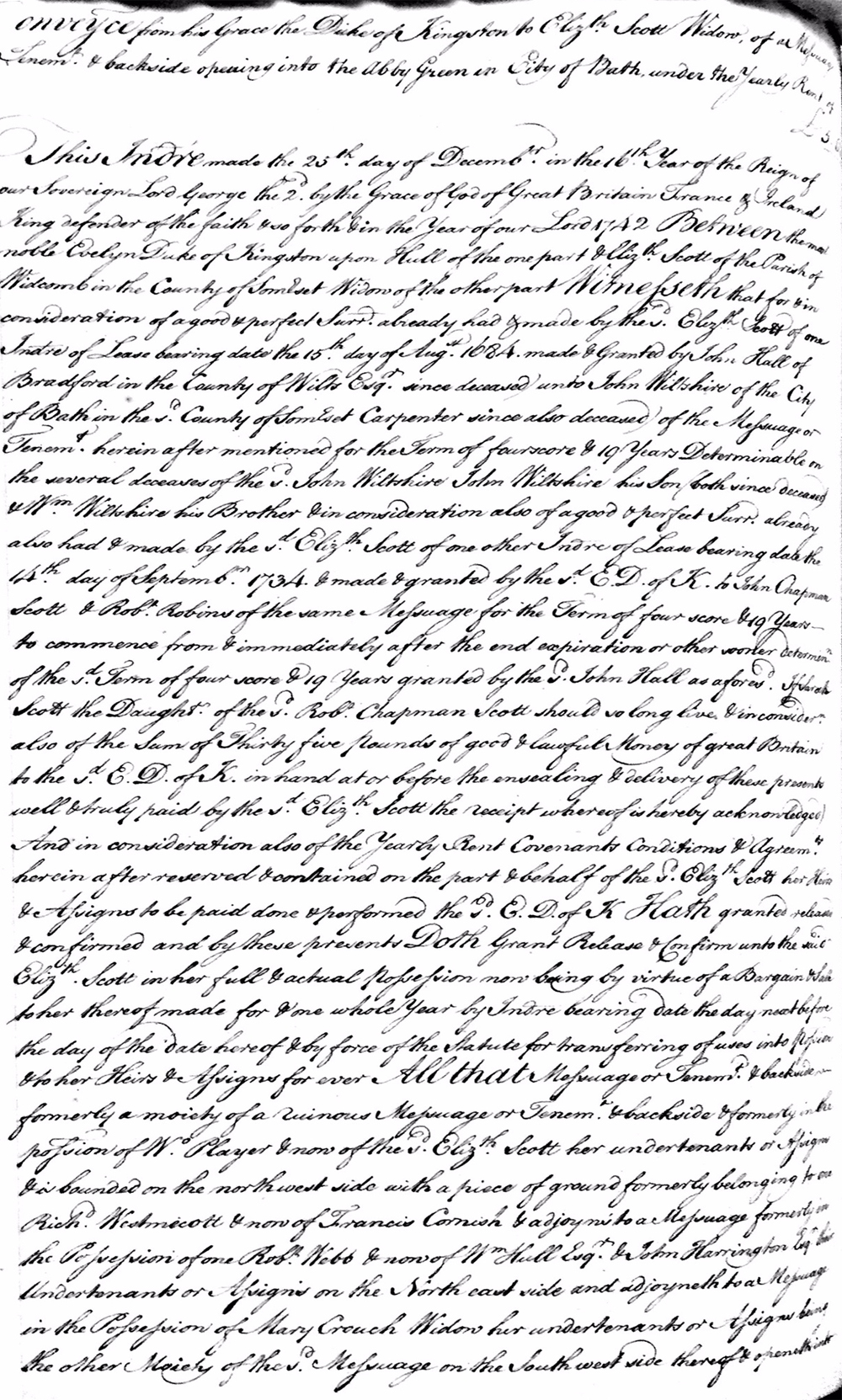
Abbey green lease 1742
Conveyance from his Grace the Duke of Kingston to Elizabeth Scott of a messuage or tenement & backside opening into the Abbey Green in the City of Bath under the yearly rent of £5-0-0
This Indre made the 25th day of December in the 16th year of the Reign of our sovereign Lord George the 2nd. By the Grace of God of Great Britain France & Ireland King defender of the faith and so forth in the year of our Lord 1742 Between the noble Evelyn, Duke of Kingston upon Hull of the one part & Elizabeth Scott of the Parish of Widcombe in the County of Somerset, Widow of the other part Witnesseth that for in consideration of a good and perfect surrender already had and made by the said Elizabeth Scott of one Indre of lease bearing date 15th August 1684 made and granted by John Hall of Bradford on Avon in the county of Wilts, Esq. since deceased unto John Wiltshire of the city of Bath in the said County of Somerset, Carpenter since also deceased of the messuage or tenement her in after mentioned for the term of four score & 19 years Determinable on the several decrees of the said John Wiltshire, John Wiltshire his Son ( both since deceased ) & William Wiltshire his brother and in consideration also of a good and perfect surrender already also had made by the said Elizabeth Scott of one other Indre of lease bearing date of the 14th September, 1734 & made & granted by the said Duke of Kingston to John Chapman Scott & Robert Robins of the same messuage for the term of four score and 19years to commence from and immediately after the end expiration or other sooner determined of the said term of four scare and 19 years. Granted by the said John Hall as aforesaid. If Sarah Scott, the daughter of the said Robert Chapman Scott should so long live and in consideration also of the sum of £35 of good and lawful money of Great Britain to the said Duke of Kingston in hand at or before the ensue long and delivery of these presented well and truly paid by the said Elizabeth Scott the receipt whereof is herby acknowledged ...
All that ruinous messuage or tenement formerly a moiety of a ruinous messuage or tenement formerly in the possession of William Player and now of the said Elizabeth Scott her under tenants or assigns and is bounded on the north west side by a piece of ground formerly belonging to Richard Westmacott and now of Francis Cornish and adjoins a messuage formerly in the possession of one Robert Webb and now of William Hull Esq. and John Harrington Esq. Under Tenants or assigns on the North East side and adjoins a messuage in the possession of Mary Crouch, Widow her undertenants or assigns being the other moiety of the said Messuage on the South West side the the Abbey Green on the South East part therefore situated and being in the City of Bath. ..Forever paying to the Duke of Kingston the yearly rent of £5.

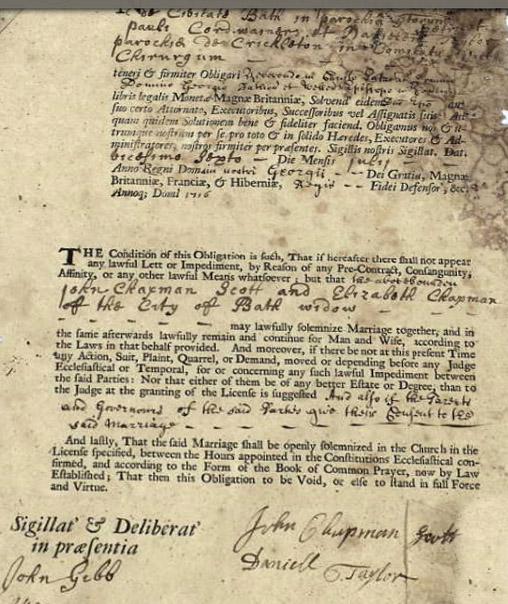

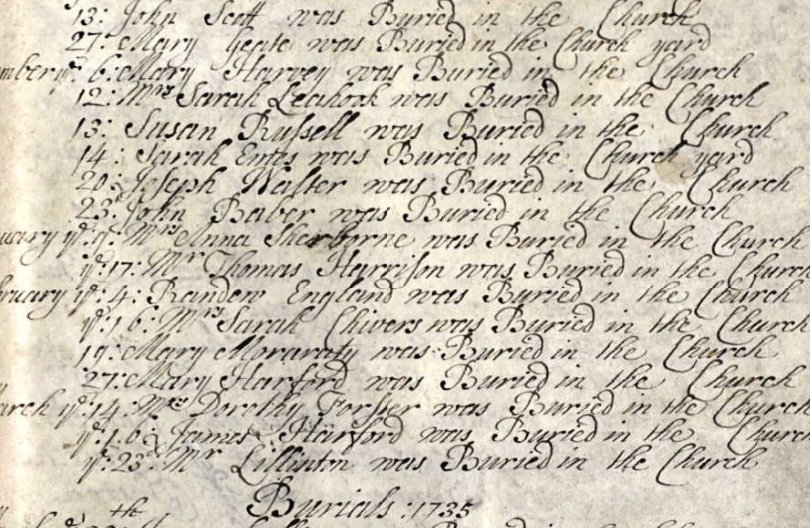
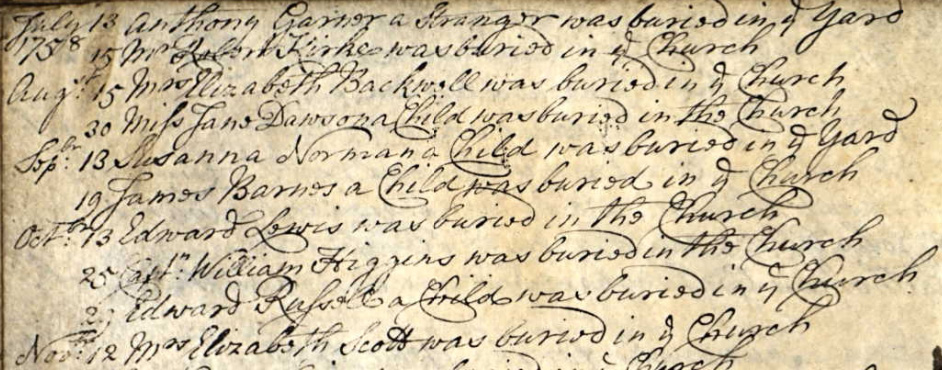


Major John André and No.22, The Circus, Bath ... bought on Christmas Eve 1766 from John Brabant and Mark Davis, cabinet-makers of Bath.
- 1. John Wood of the parish of Walcot Somerset, gent. and Charles Rotton of Bath, gent.
2. John Brabant of Bath, cabinet maker and Markes Davis of Bath, cabinet maker trustee for John Brabant.
Bargain and sale from 1 to 2 for a year of a messuage in the Circus.
- BC/6/2/9/562/1
- Former Referece Number BC153/562/1

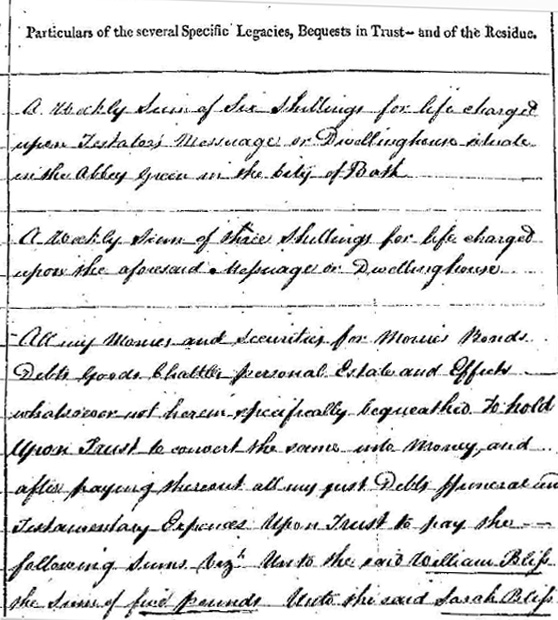
July 22nd 1805 sum sworn for is £600
Name of Testator: John Brabant of the City of Bath, Cabinet Maker
Name of Executor: Dorothy Wither Pinke of the Parish of Lyncombe and Widcombe, Spinstet.
Name of Legatees: William Bliss and Sarah Bliss, wife of William.
Degree of kindred: Nephew
Particulars of legacy: A weekly sum of six shillings for life charged upon Testators Messuage or dwelling house situate in Abbey Green in the City of Bath.
A weekly sum of three shillings for life charged upon the aforesaid Messuage or dwelling house.
All my Monies and Securities bonds debts goods chattels personal estate and effects whatsoever not herein specifically bequeathed to hold upon trust to convert the same unto money and after paying all my past debts, funeral expense upon trust to pay the following sums.
To the said William Bliss, the sum of £5, upon Sarah Bliss the sum of £5. Unto my nephew, William Chapman the sum of £10. Unto William Bartlett, now or late of Exeter, upholsterer, the sum of £10. Unto all my great nephews and nieces, sons and daughters of three nieces, Elizabeth Davis, Widow, Mary Lamb, widow and Ann Bartlett, deceased the sum of £10. Unto my Great Niece, Mary Ann Woodman, the sum of £21in addition to the £10 already given to her as one of my great nieces. To pay the residue to my three nieces, Elizabeth Davis, are Lambe and Fanny Chapman.
To William Bliss, nephew, Wearing Apparel and Working Tools.
To Robert Woodman. All my Electrical Apparatus and Books on the subject of Electricity.
To Samuel Hallett. Smoletts History of England and the fixtures of the Kitchen Door and in the Back Parlour of my tenement at Widcombe.
To Dorothy Pinke. Remainder of my Goods, Furniture, Linen, Plate, China, Glass, printed books and other property at my said Tenement
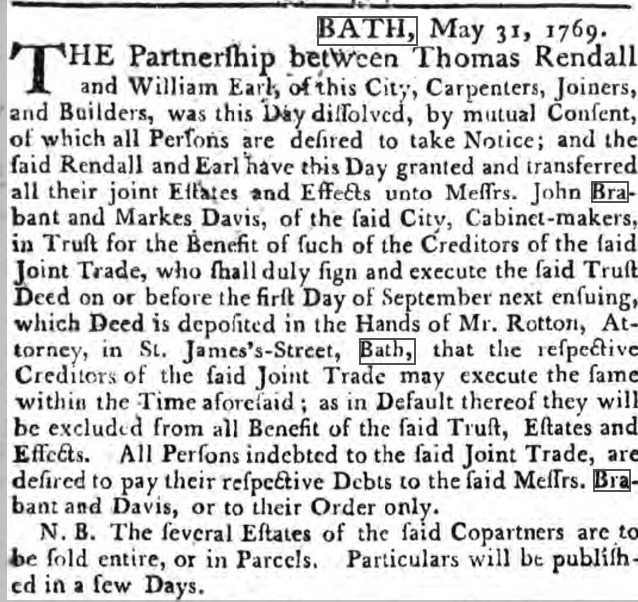
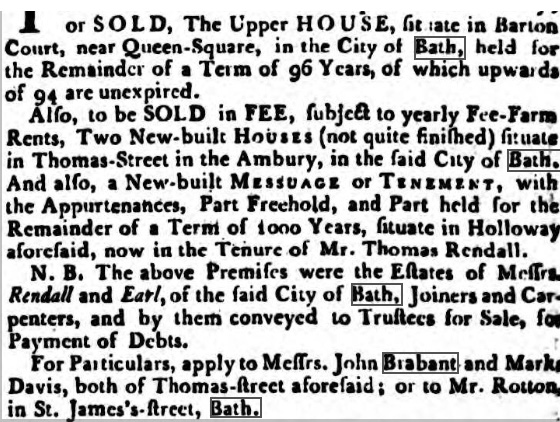
.jpg)


In September 1780 John Brabant, whose wife inherited 9 Abbey Green is shown to let the property, which is described has having 17 rooms with access to the passage that went to the side of the building linking the Three Tuns in Stall Strret with Abbey Green. the small side window would have once been its entrance.
1780 Goods: auction - household goods of house 1 door below Tuns Psg, Abbey Green, Bath 14 & 15 Sep by Daniel Dickes. Enq Mr Brabant, toy warehouse, Union Psg, Bath; or D. Dickes, Market Pl, Bath. House to be let suitable for lodging or trade
1780 December Property: to let - a house with 17 rooms in Abbey Green Bath. An additional light may be made into Three Tuns Passage. Partcs at Brabant, cabinet & toy shop, Union Pssge, Cross Bath.
1780 Finance: all persons indebted to estate of John Milner, decd at The Punch Bowl, Horse St, Bath to pay Mr John Brabant, Union Pssge, or Mr Thomas Coatsworth, servant to the late Sir William Quinton (the excrs of said John Milner). Creditors to send A/Cs to excrs.
1782 Property: ## to let - house on on S-W side of Kingsmead Square, Bath, with 3 sorts of water, lofty rooms, free from offensive smells as sewers contrived to prevent such, large room convenient for workshop in upper part of house, excellent shop against the street. Enq John Brabant, Cross Bath; S. Hazard, Cheap St, Bath.
1788 Finance: wanted to purchase annuity of about £30 p.a for life of person 62 years, good security. Enq Mr Brabant, toy & electrical man nr Cross Bath, Bath.
1798 Deaths: Mrs Brabant, wife of Mr Brabant, medical electrician of this city on Thursday



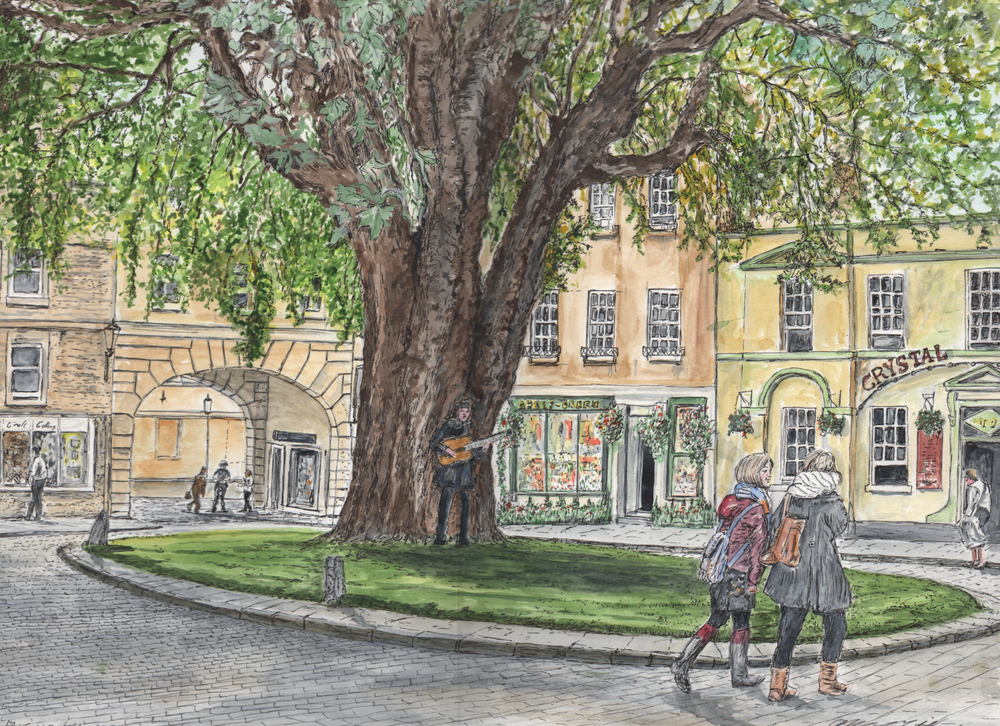
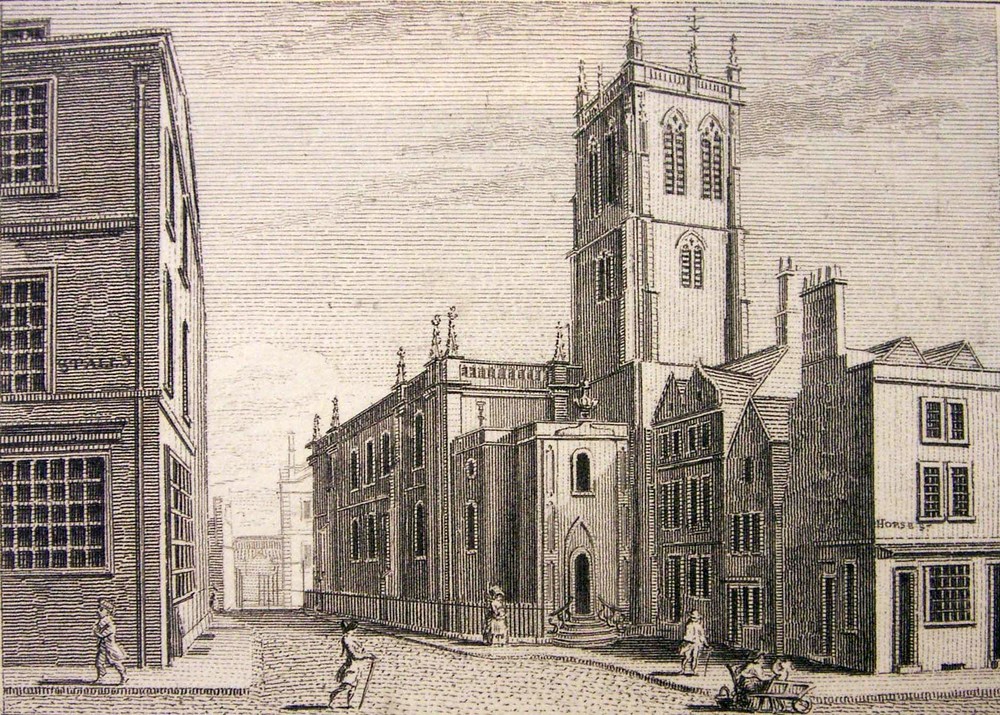
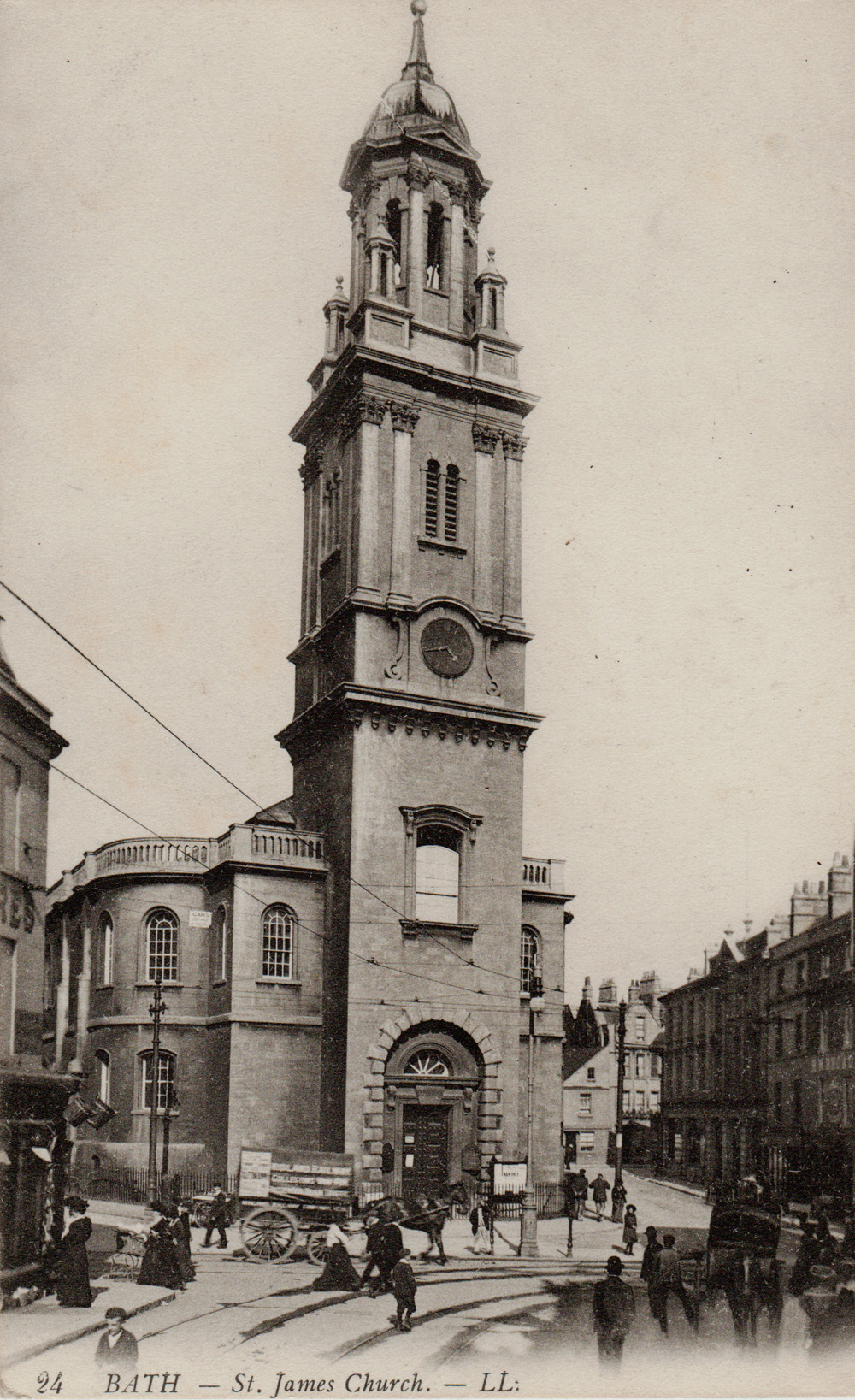
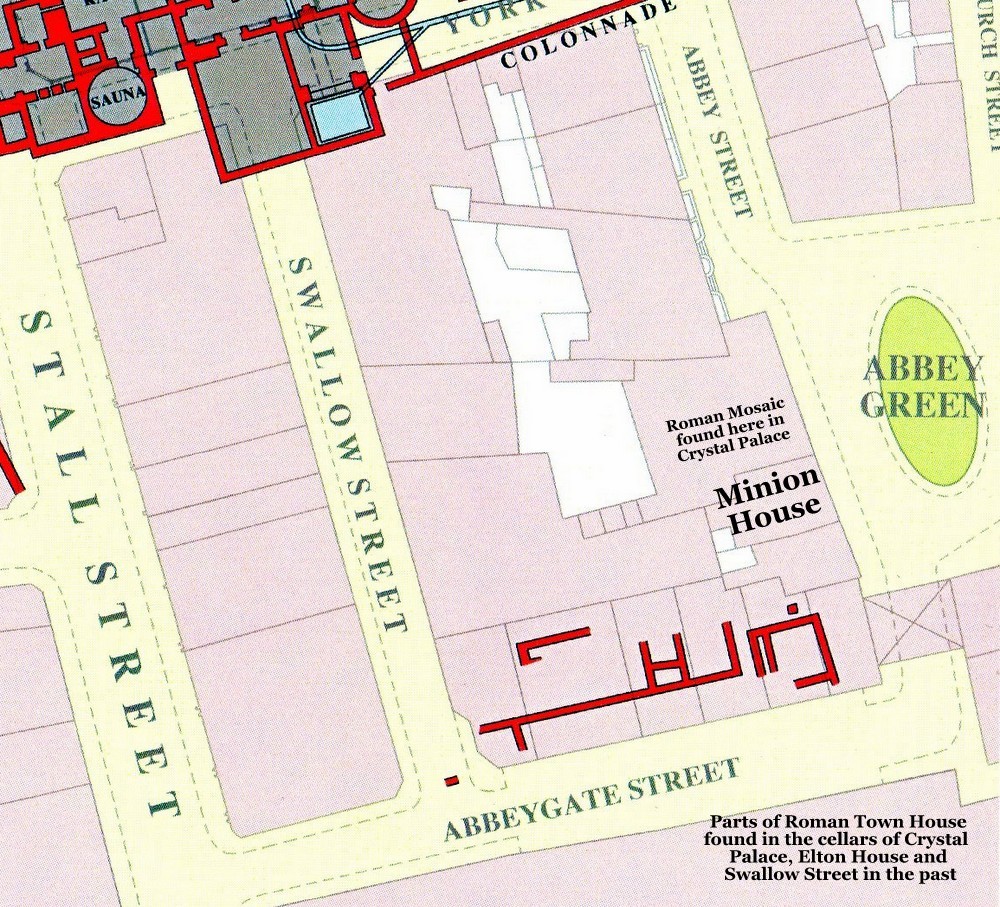
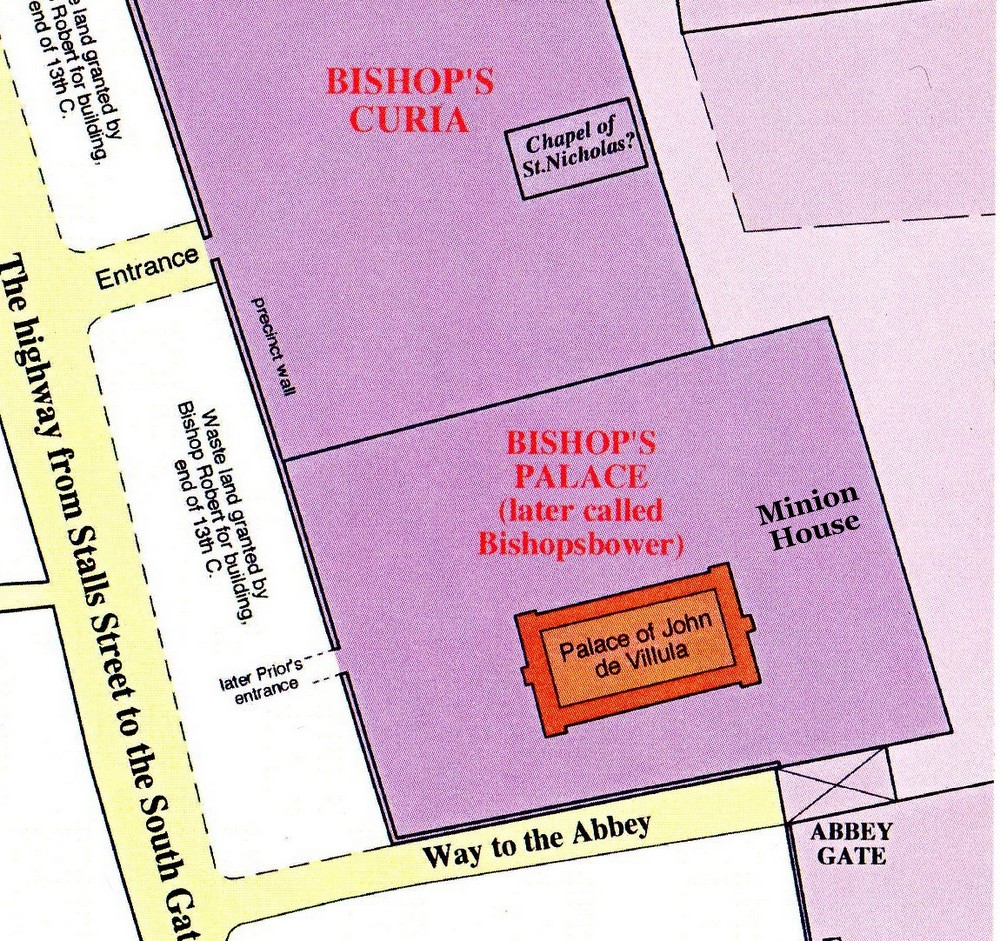
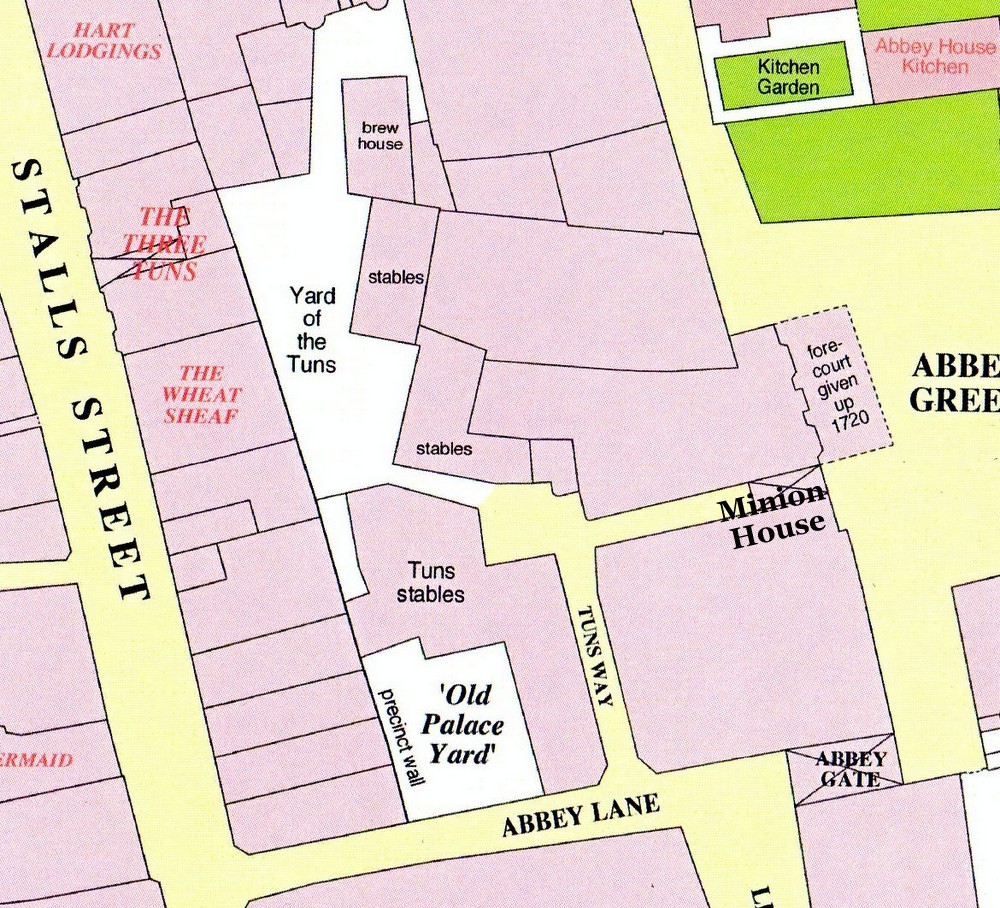
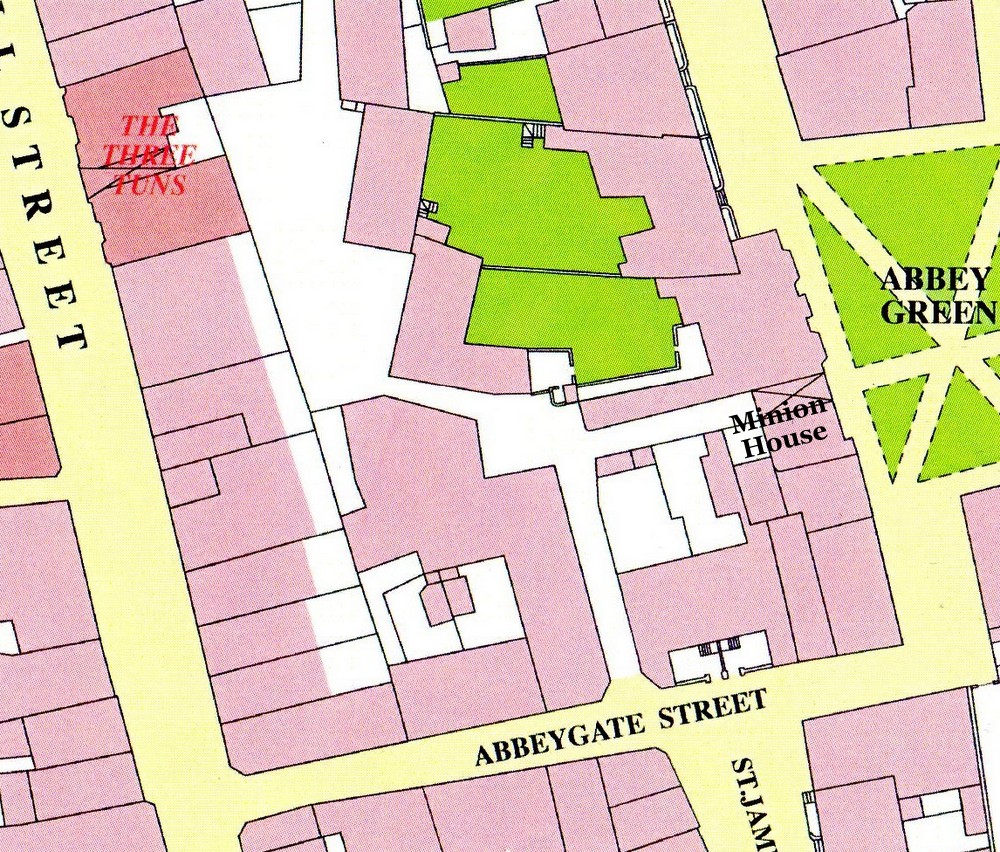
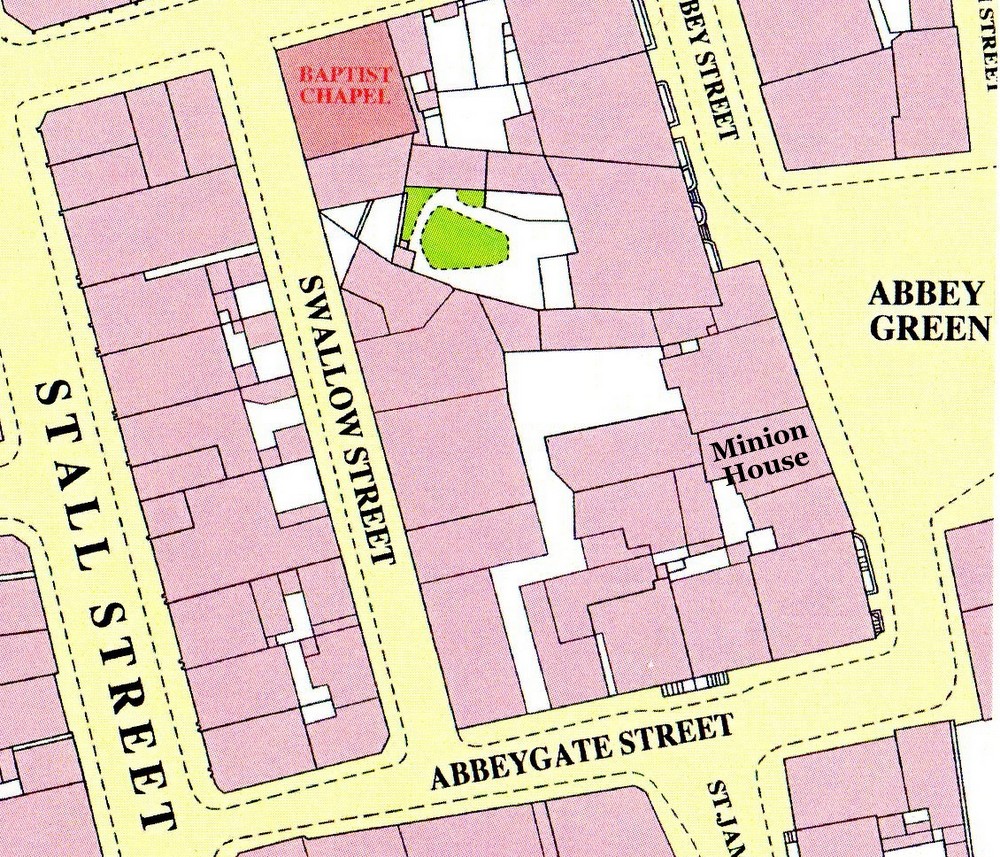

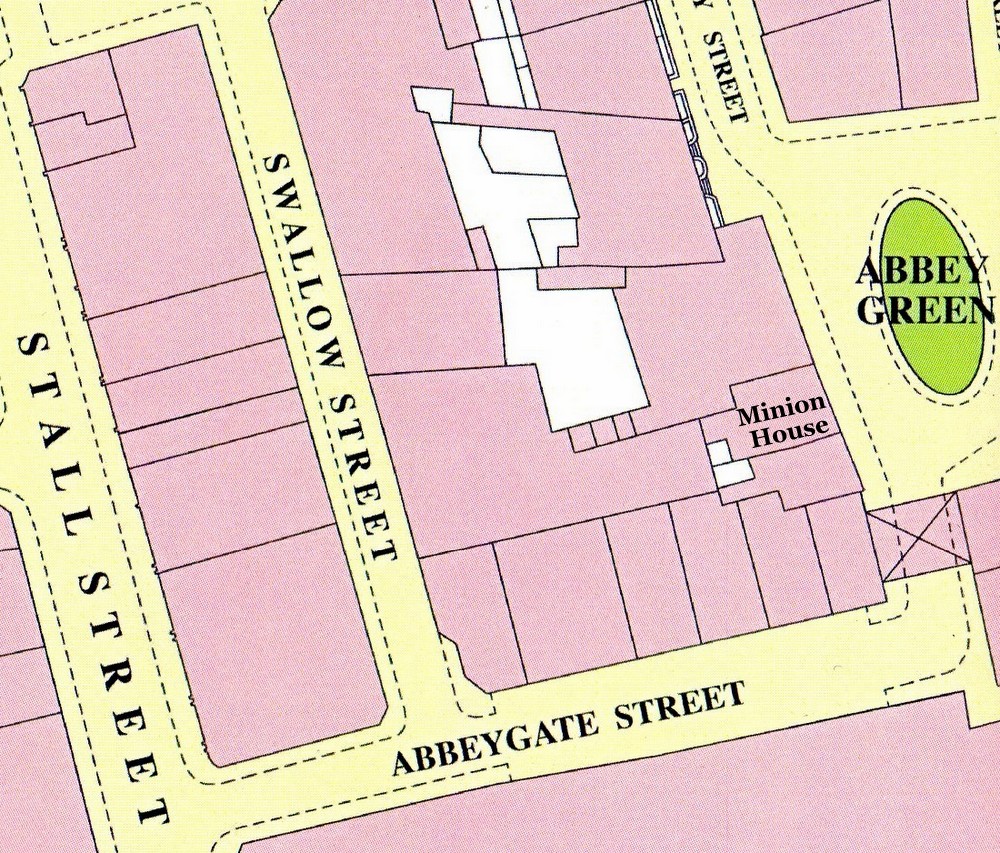
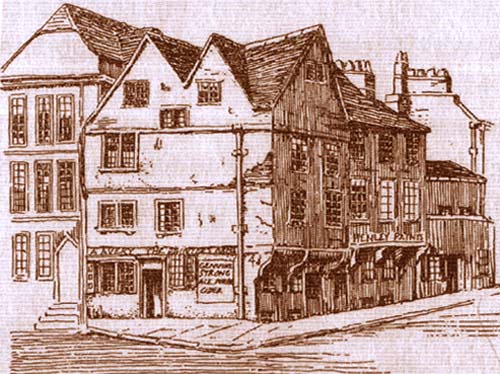
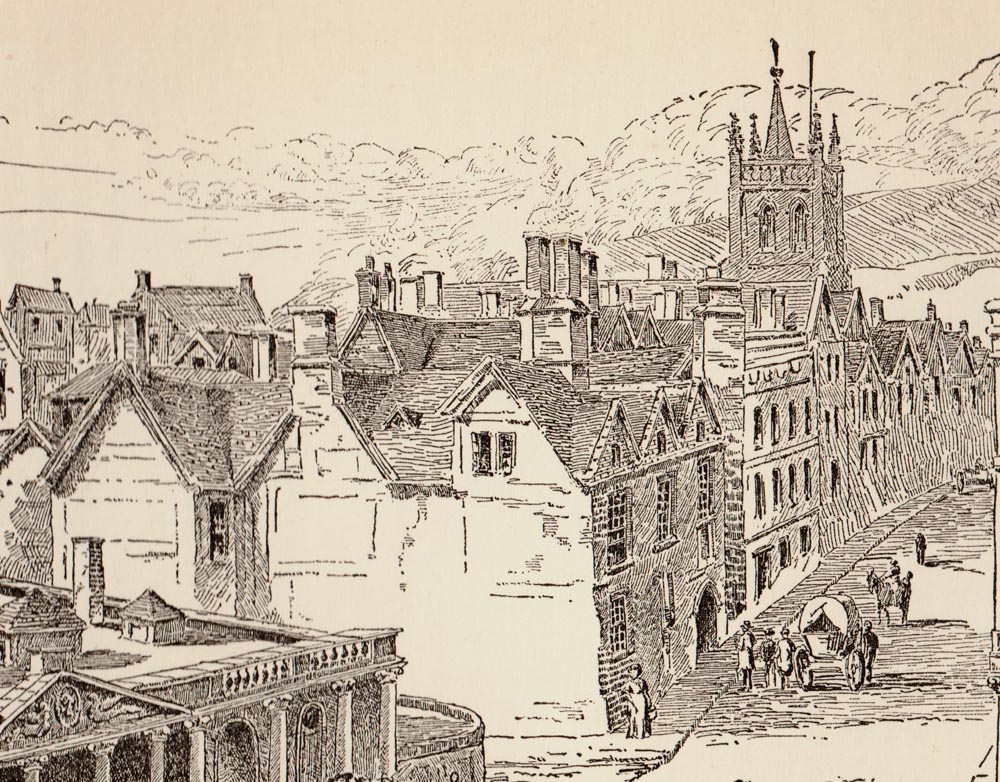
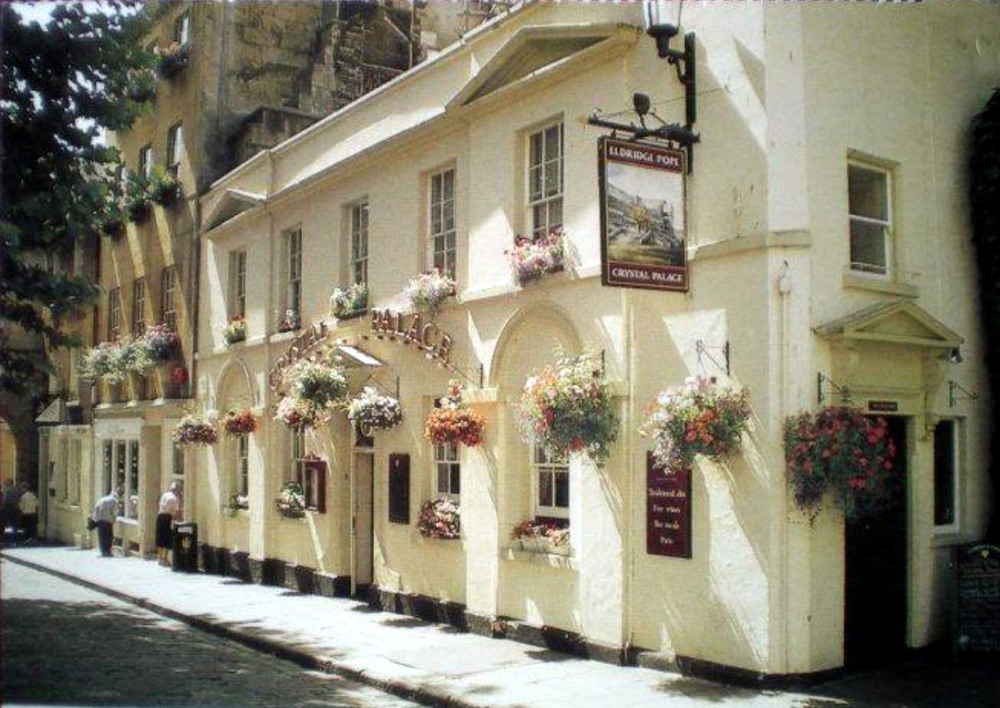

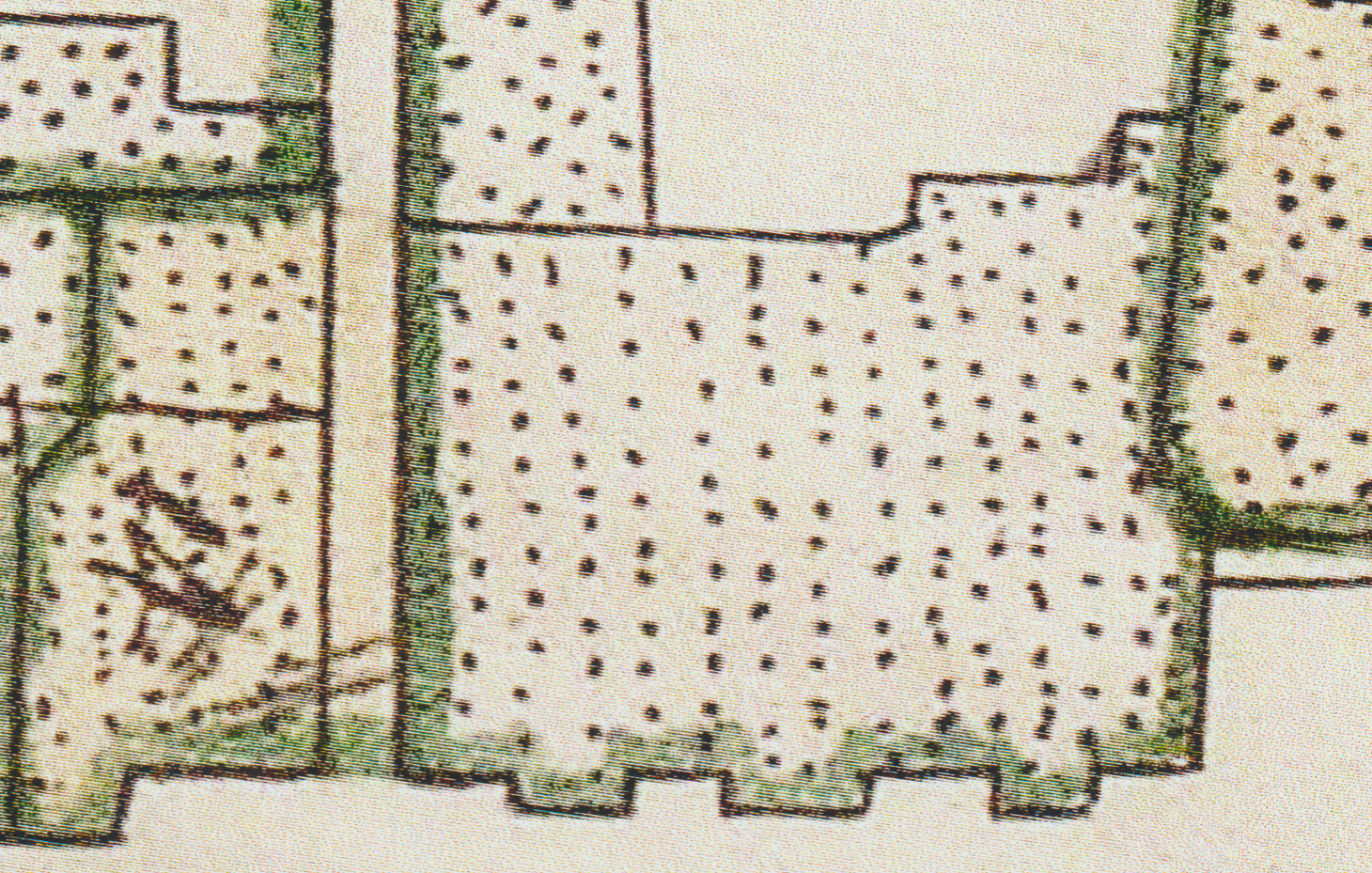
.jpg)
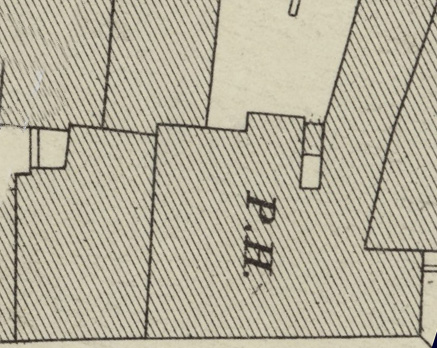
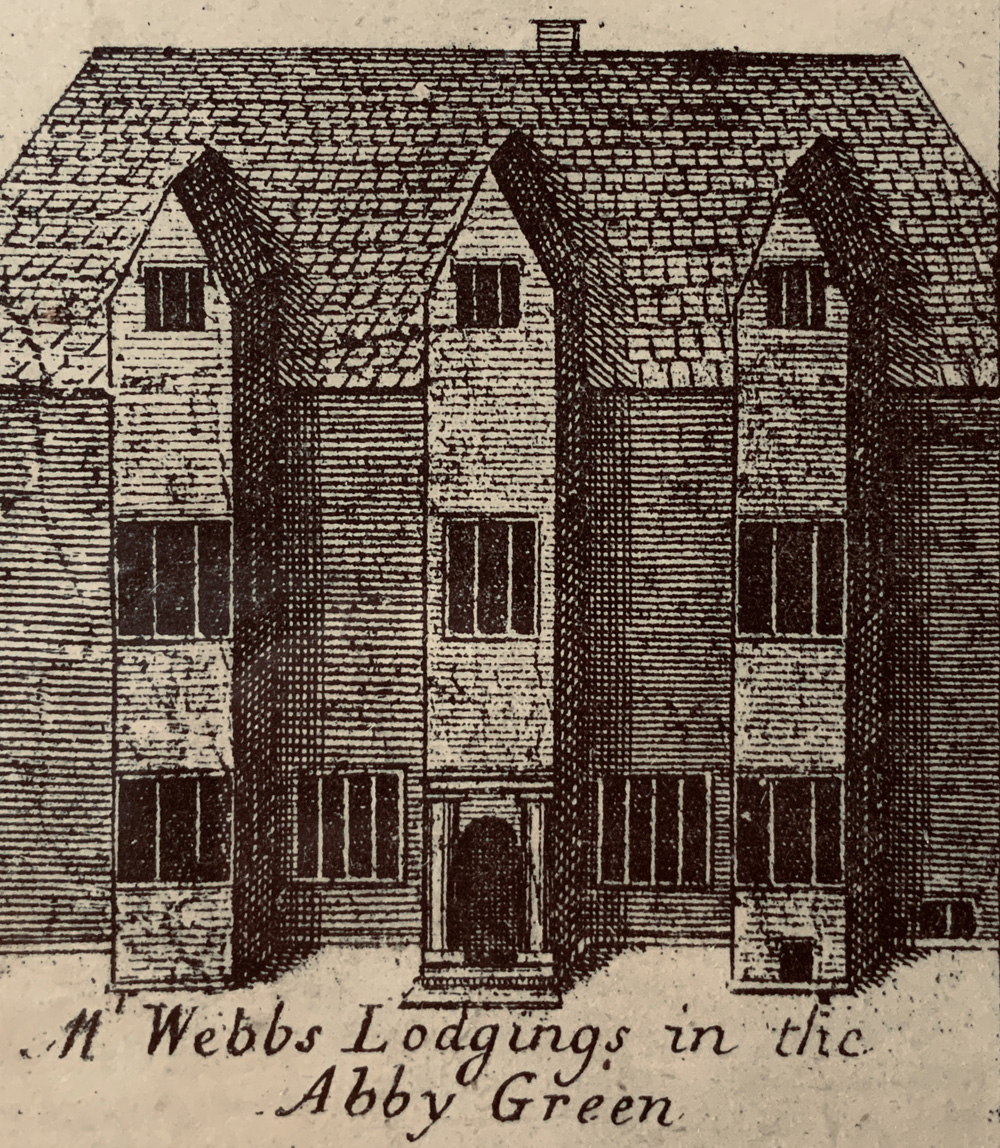
.jpg)




